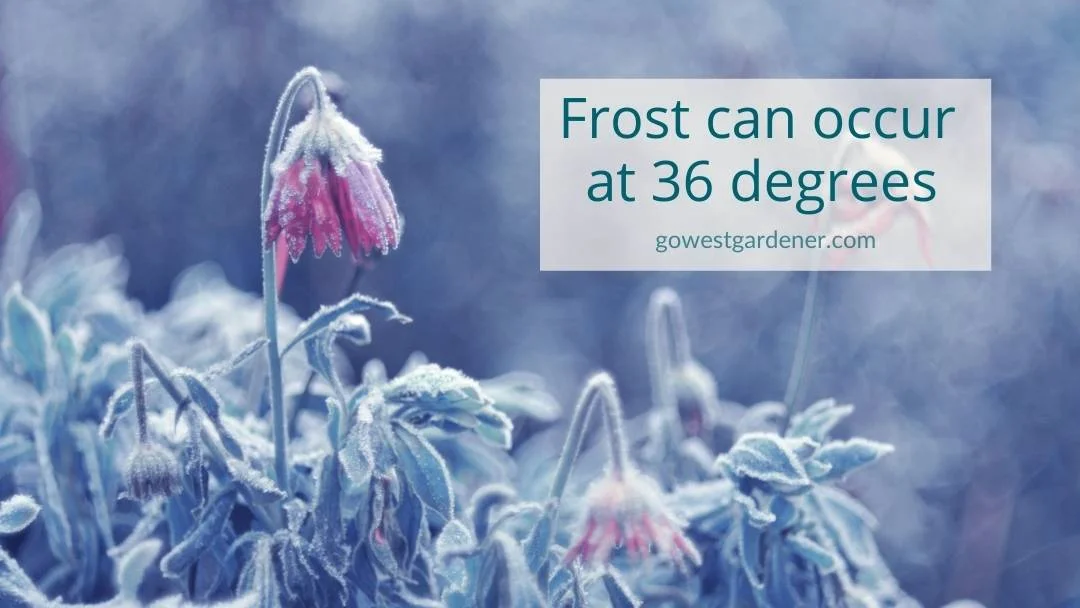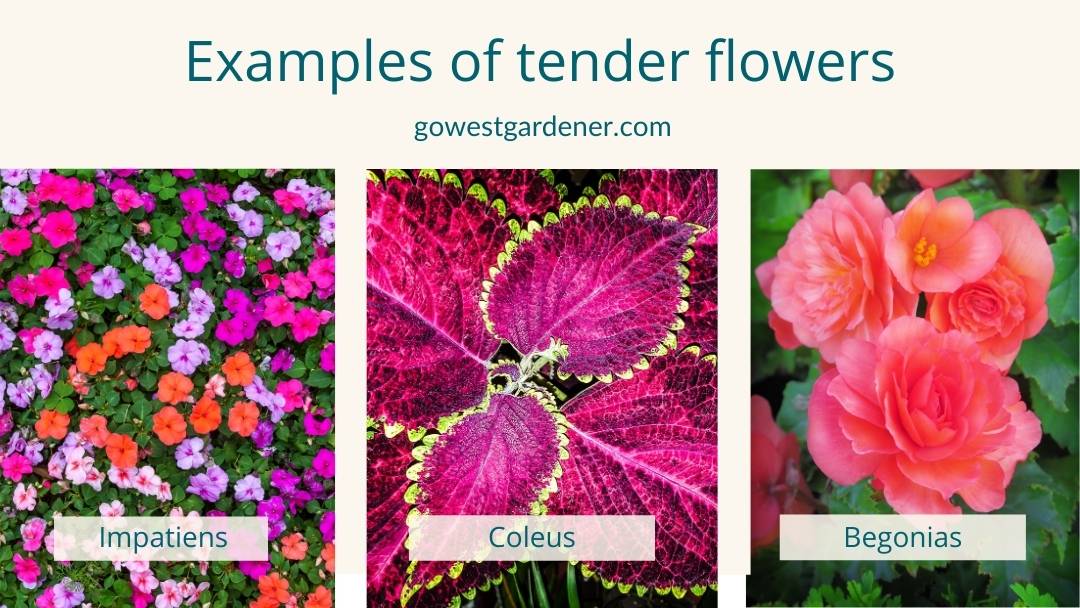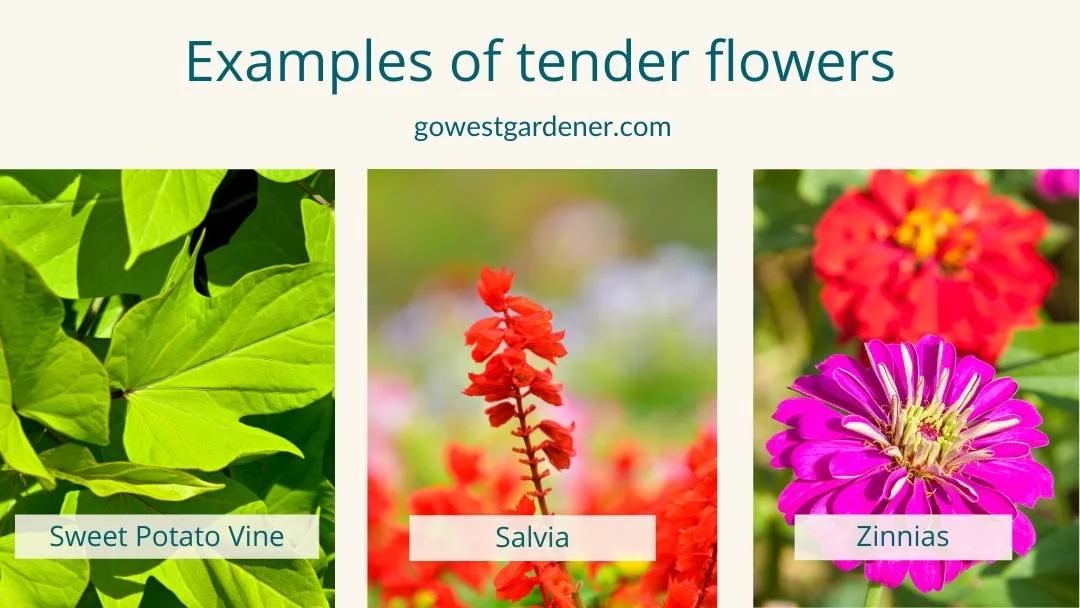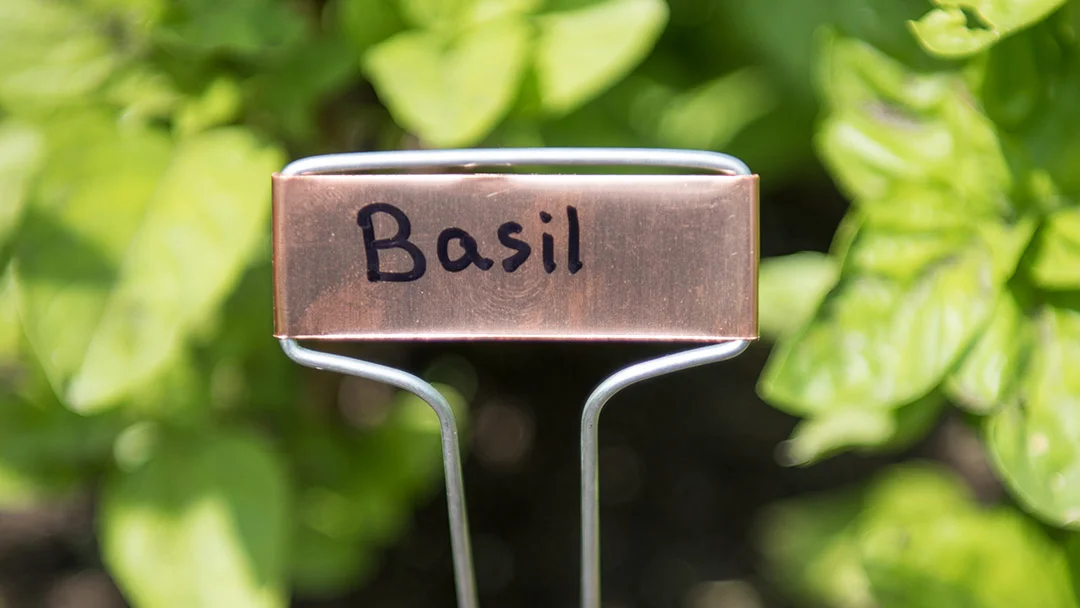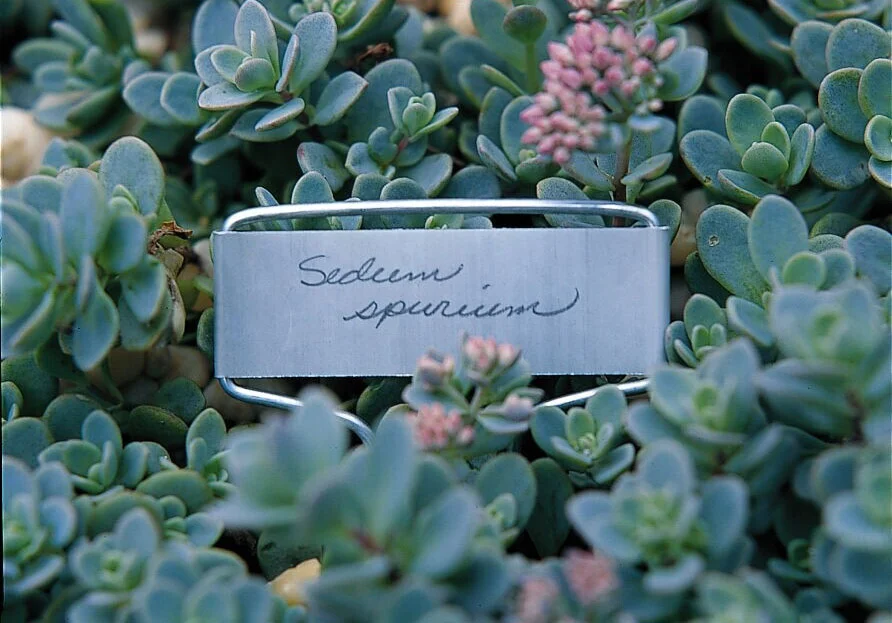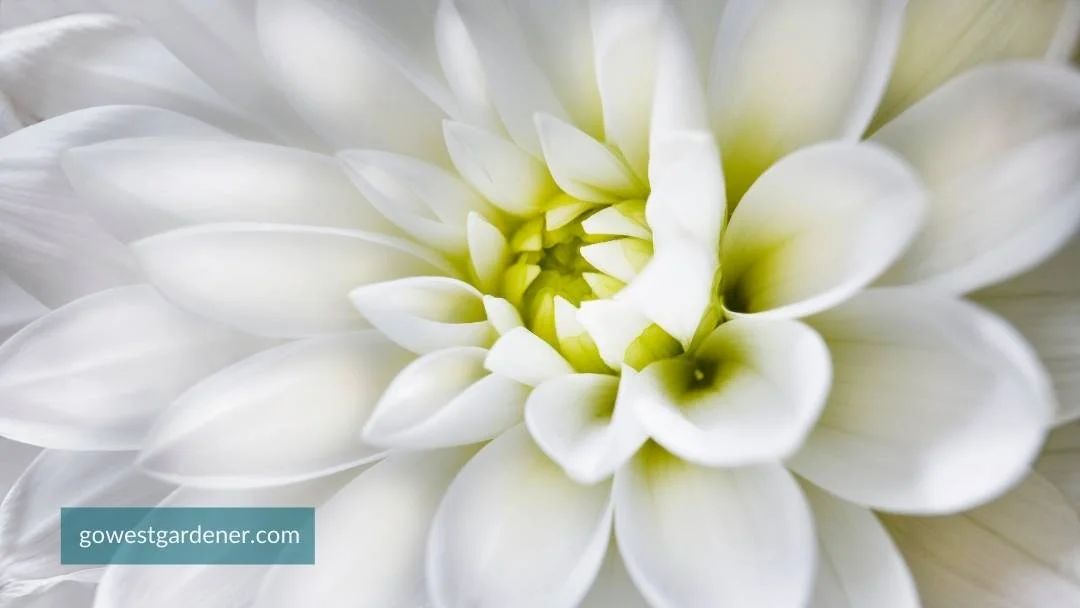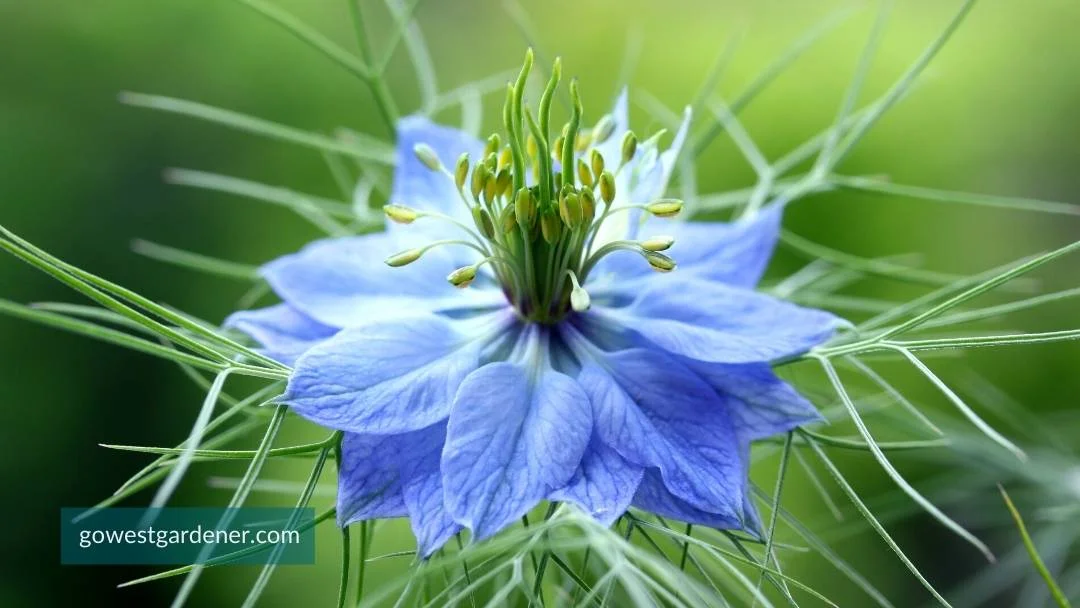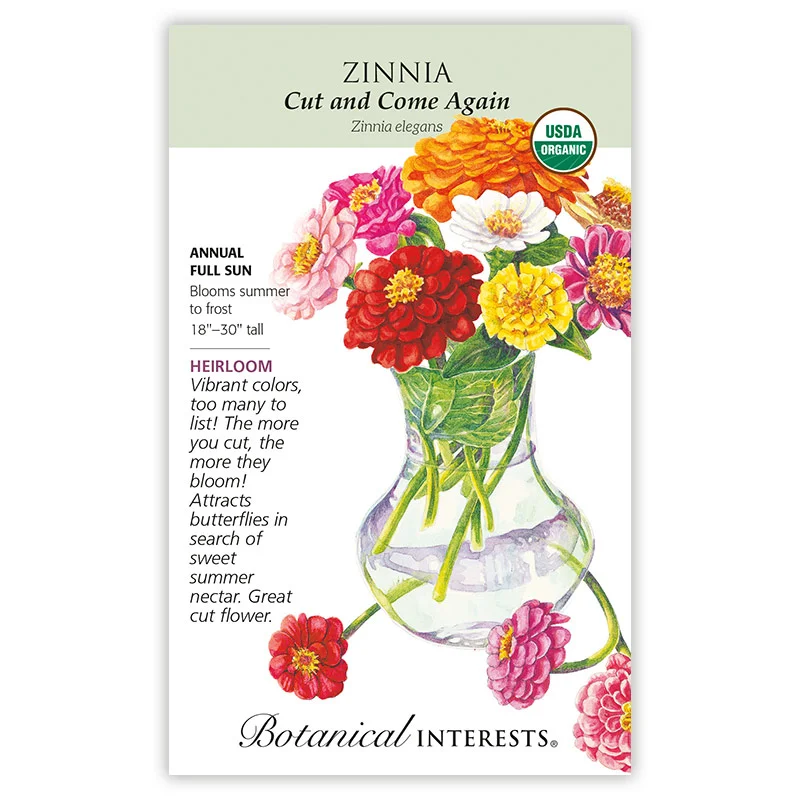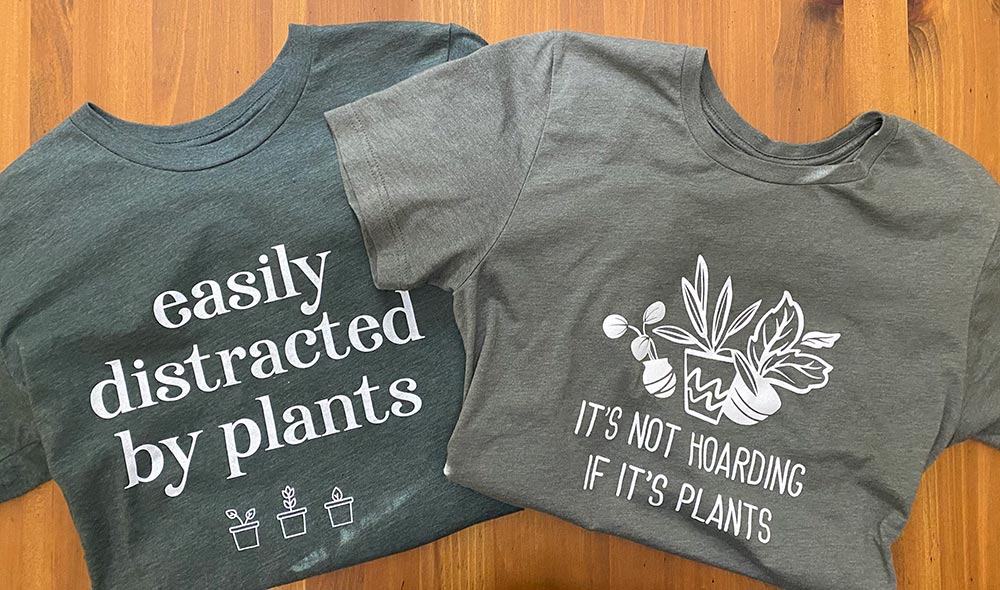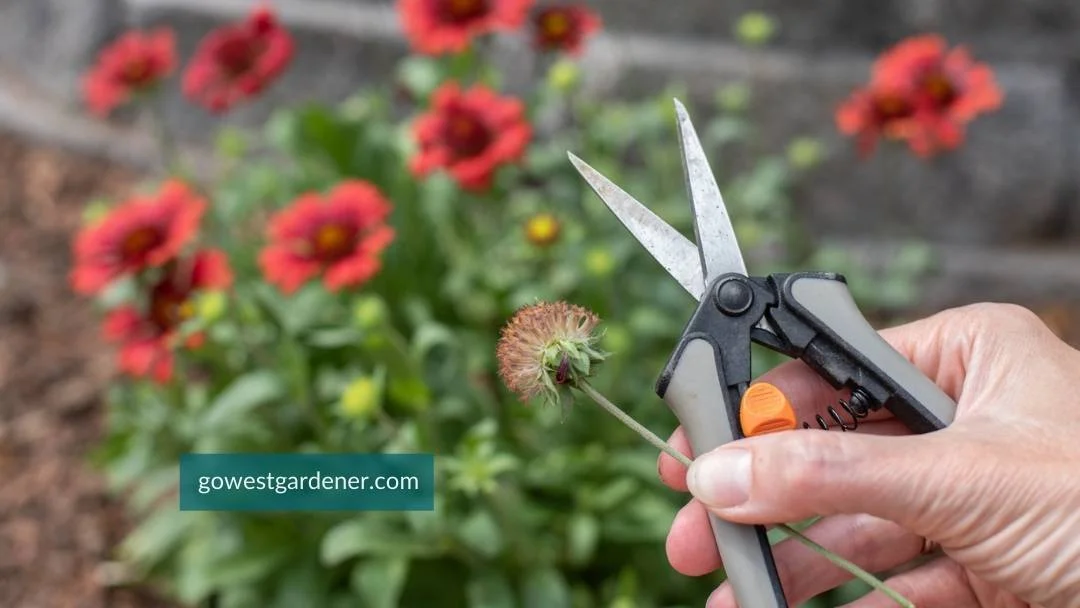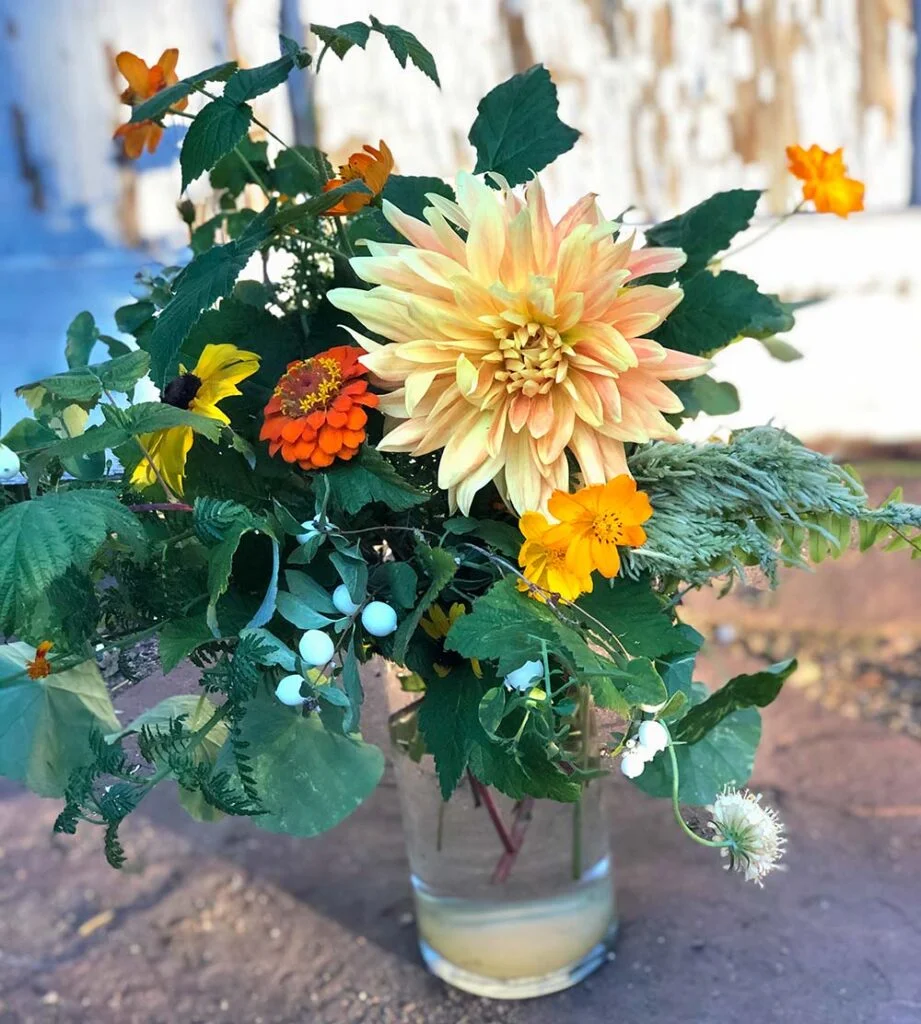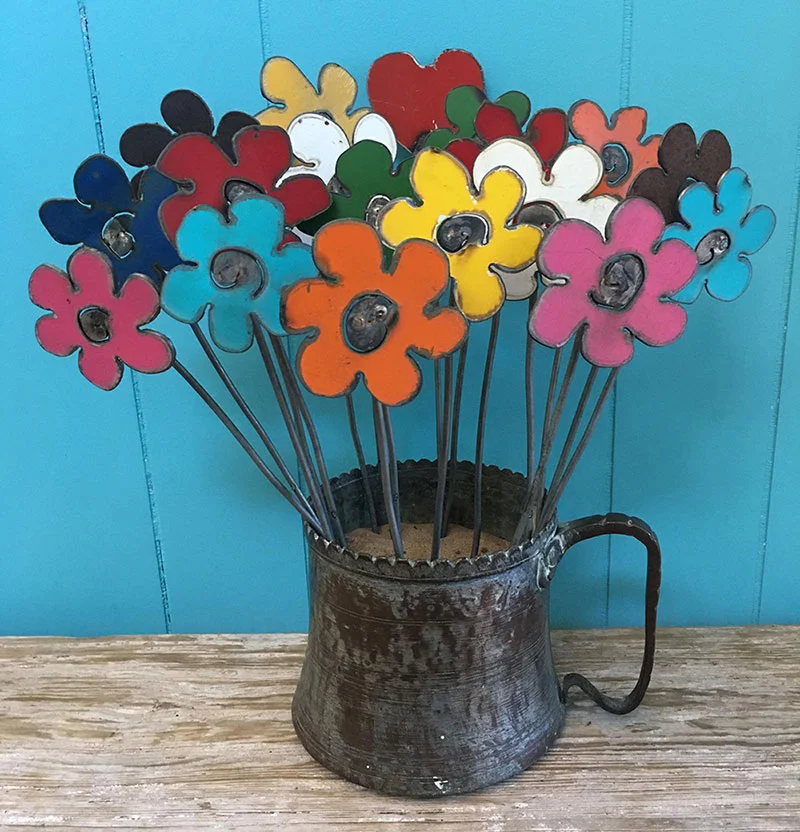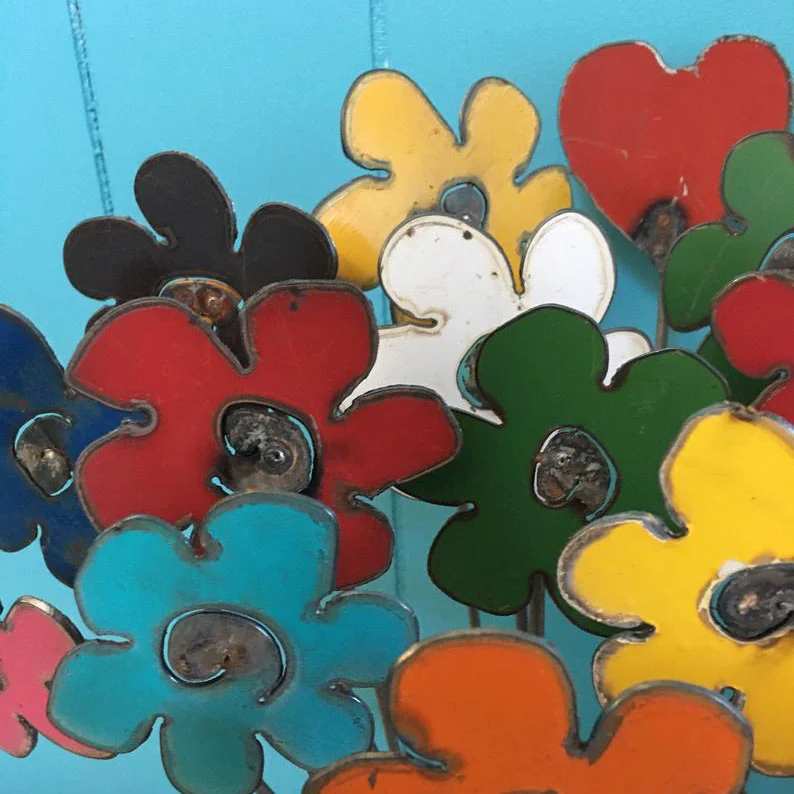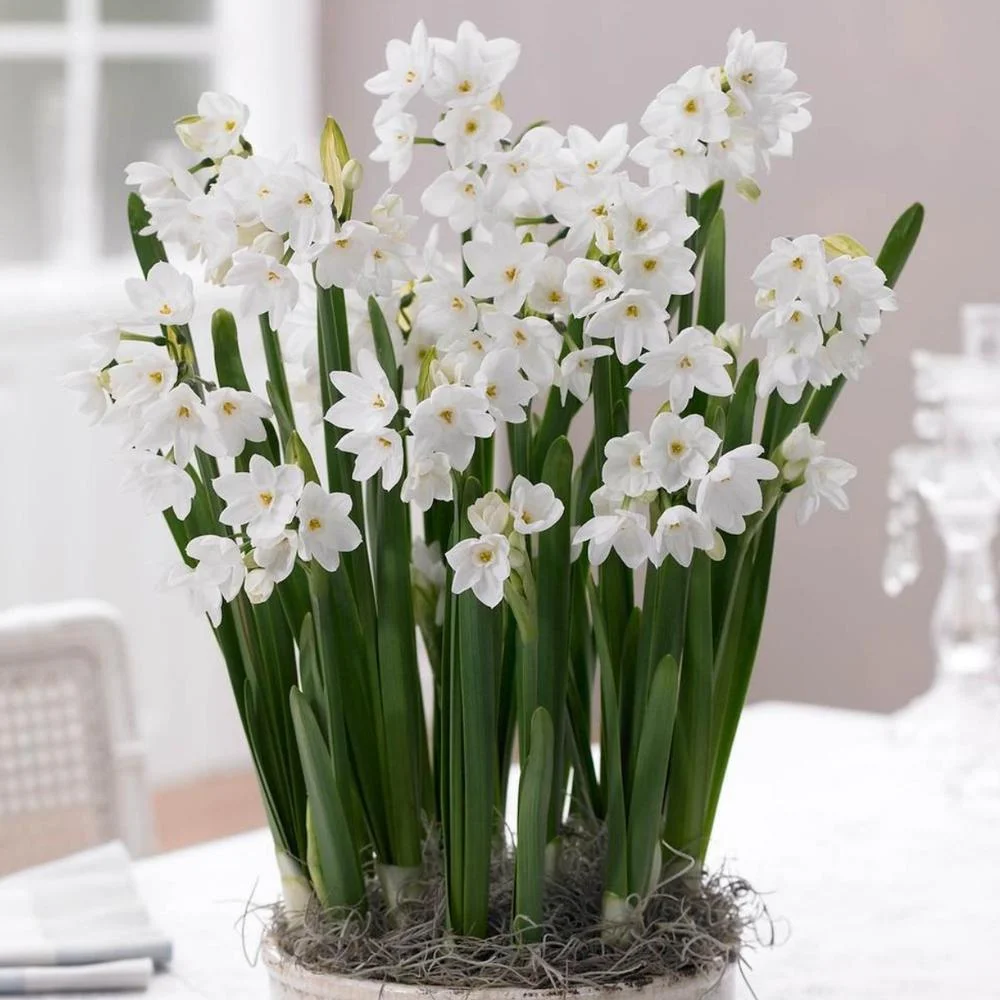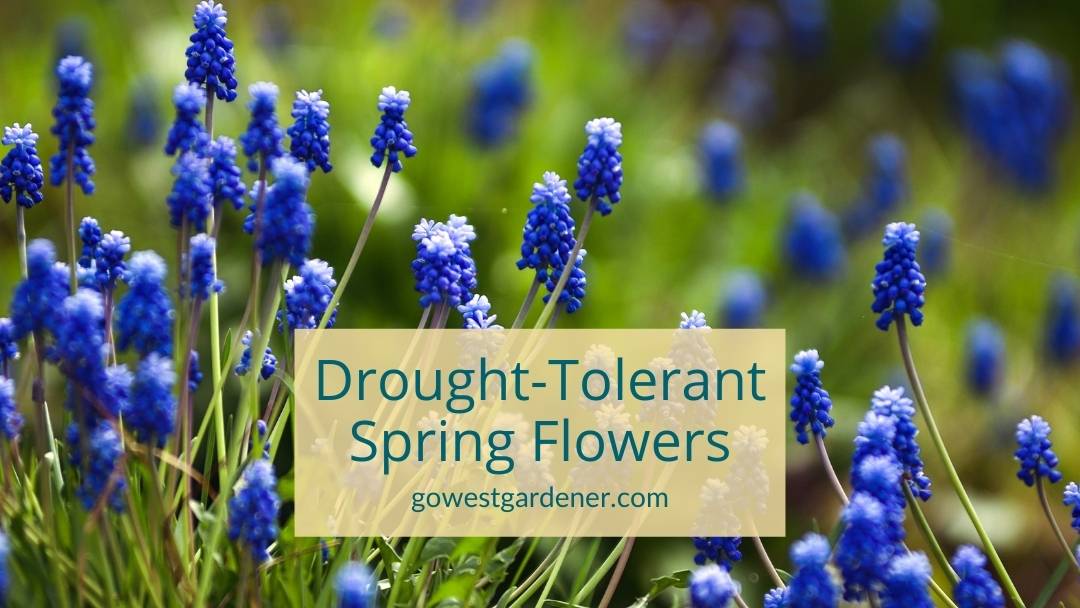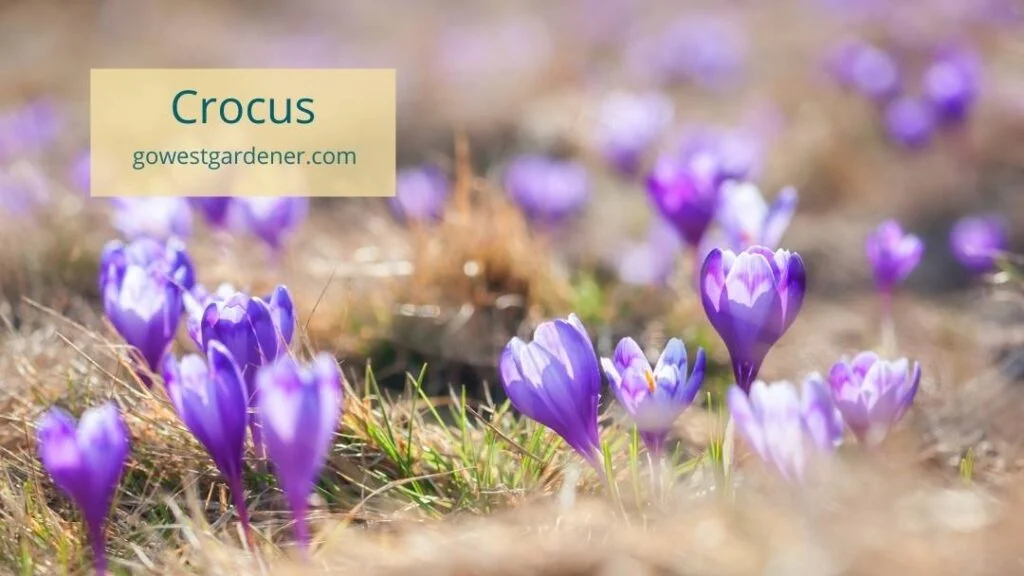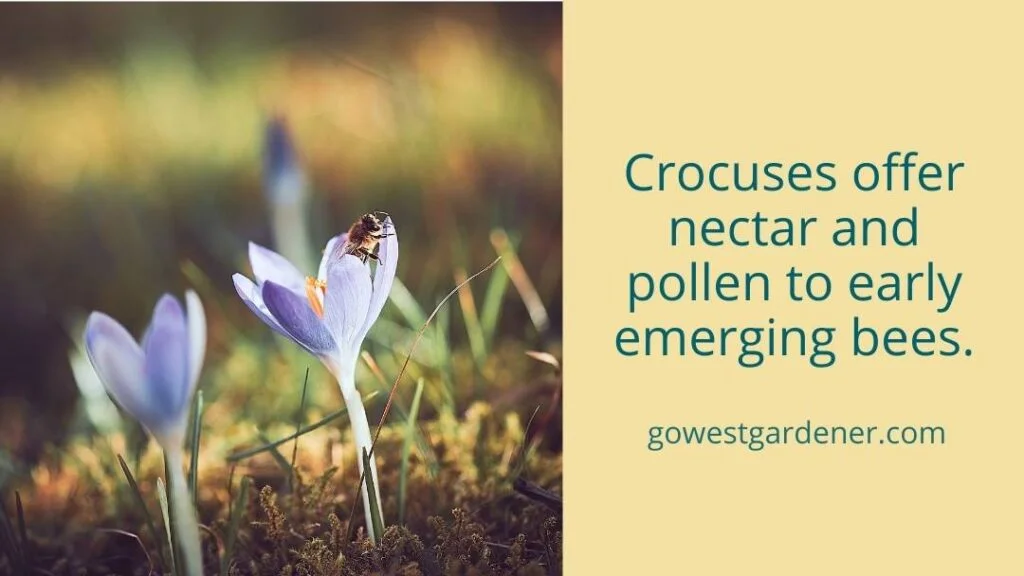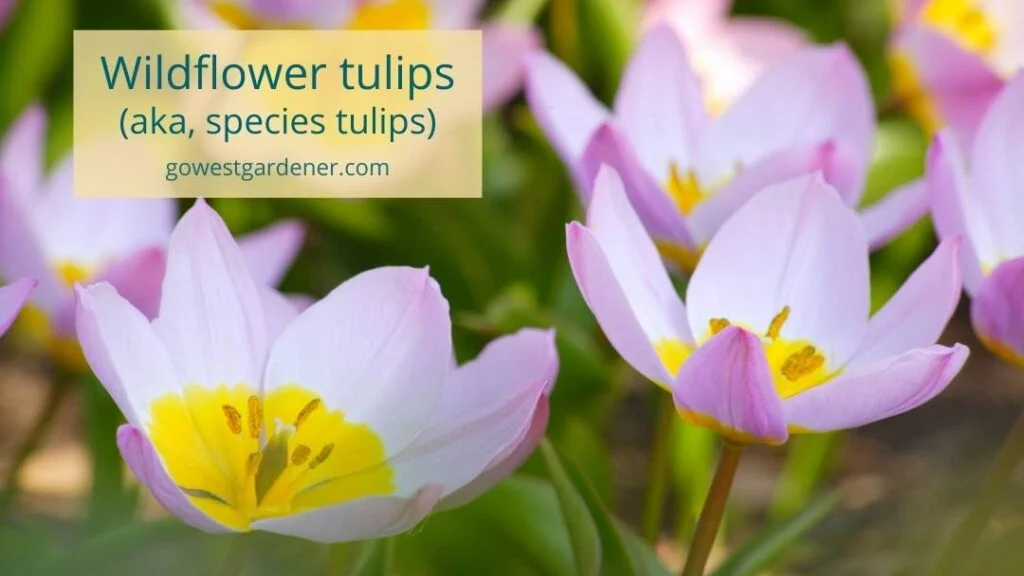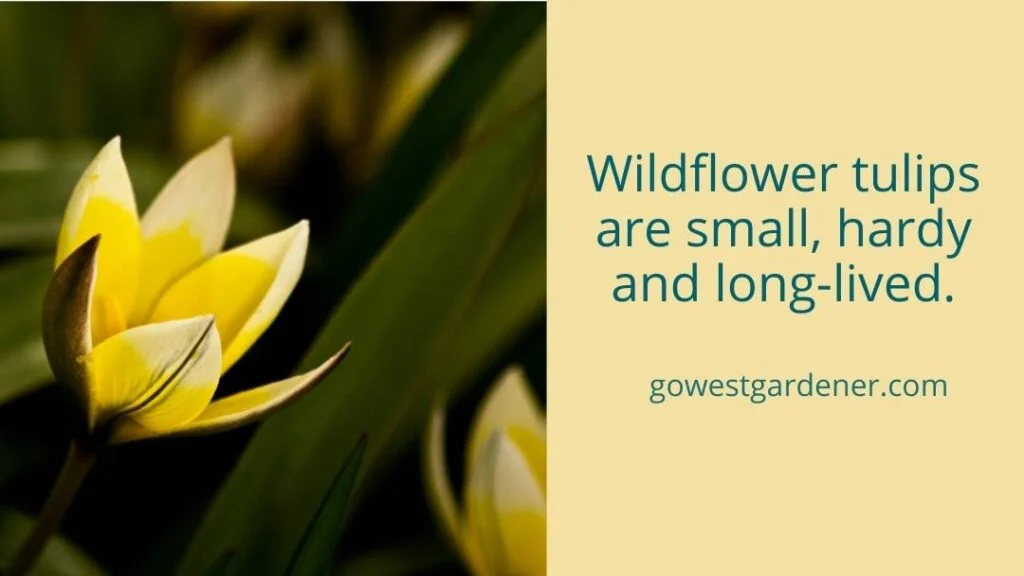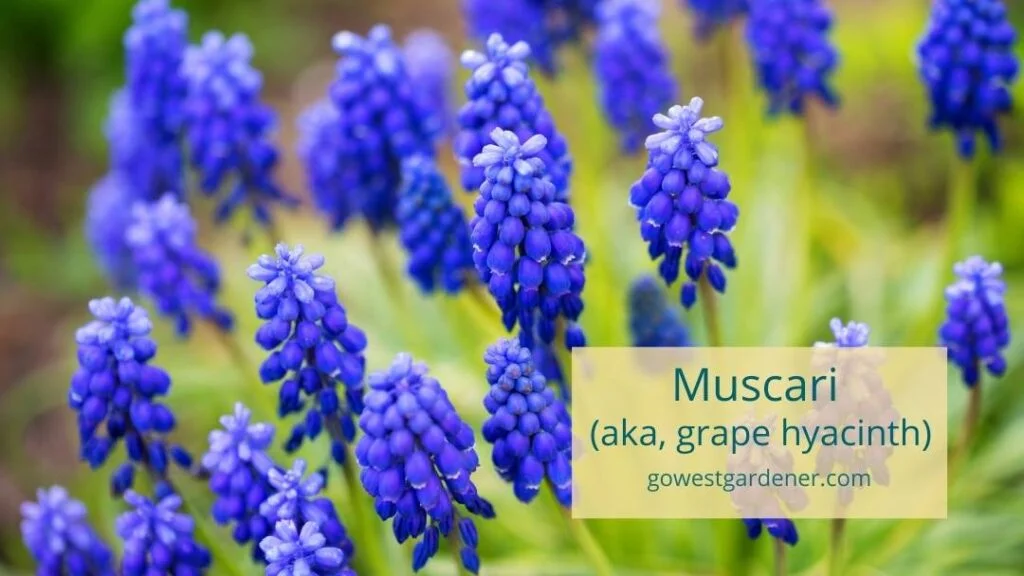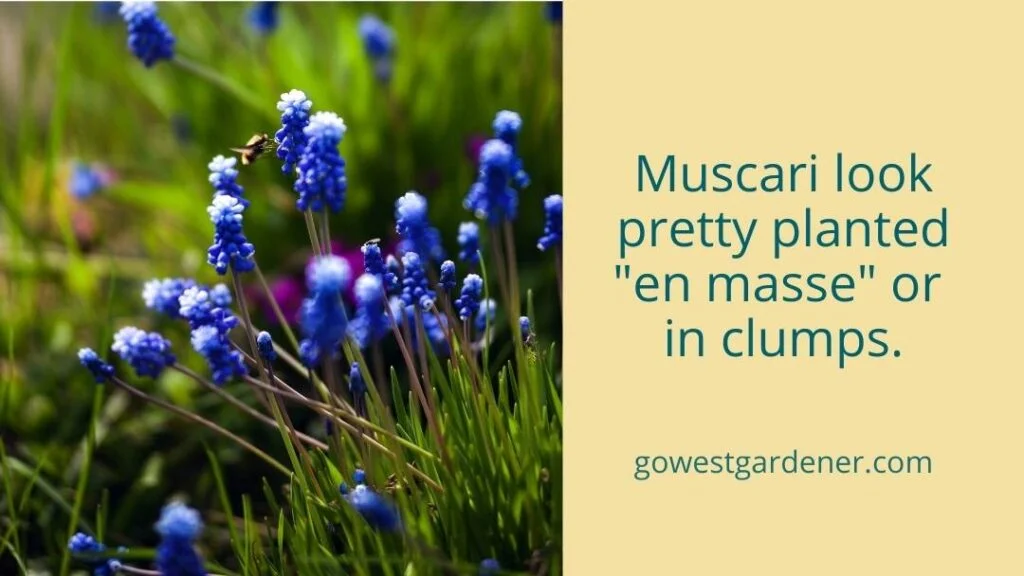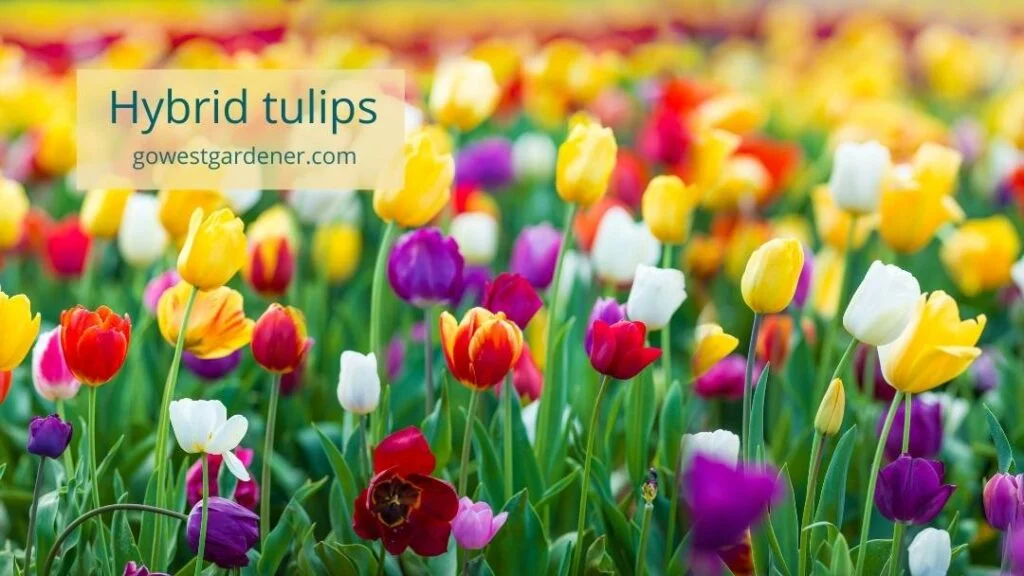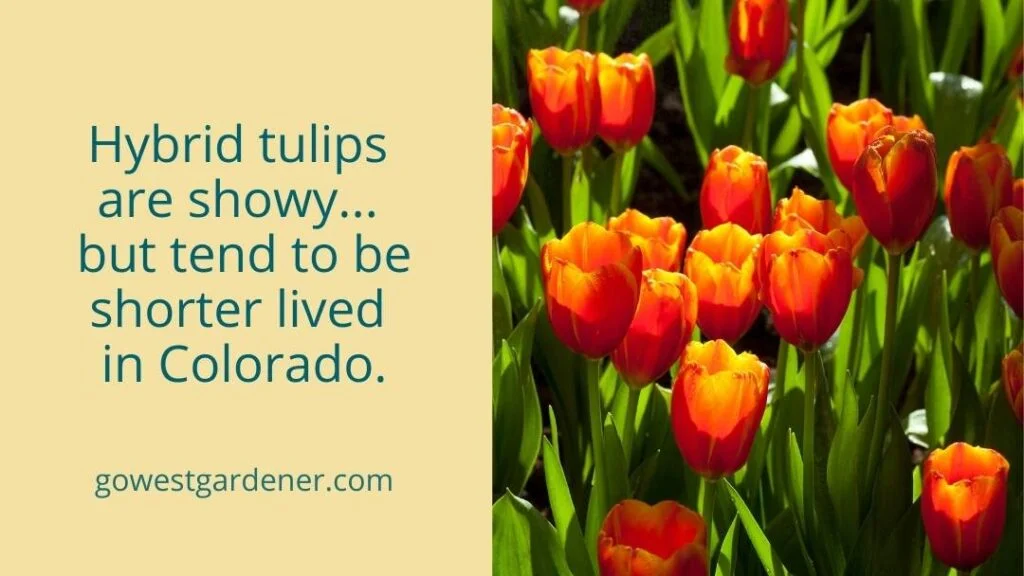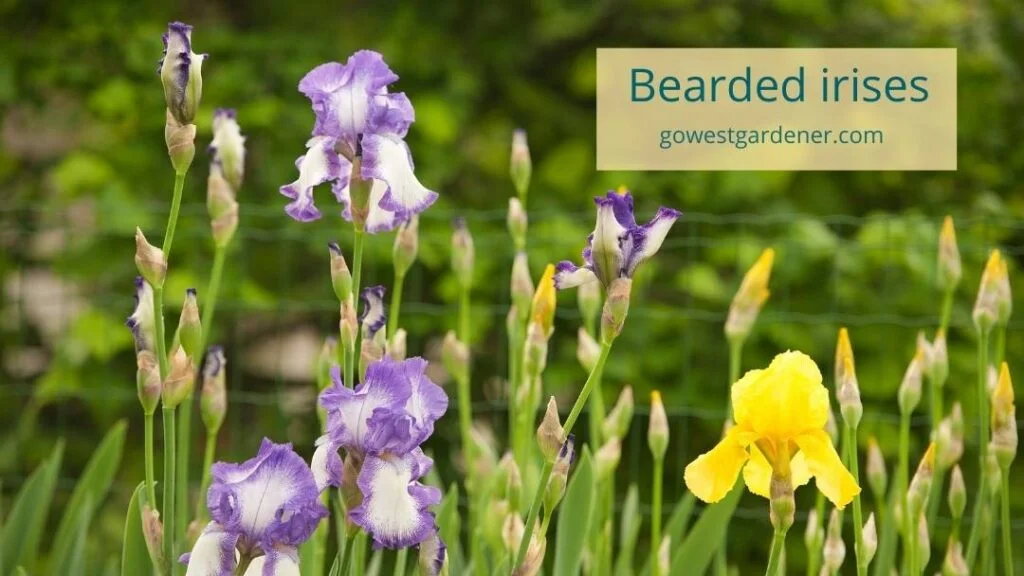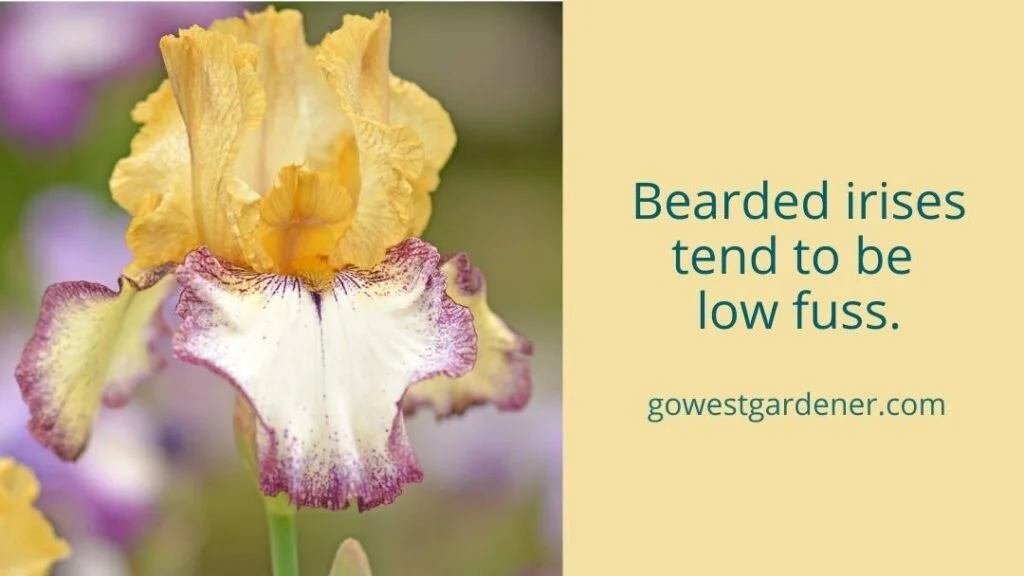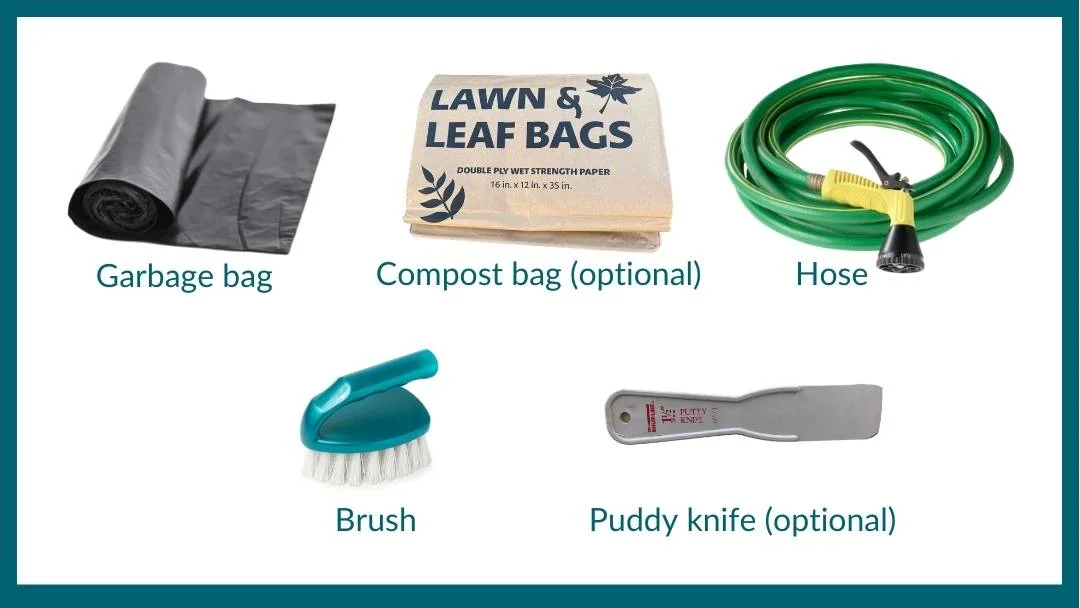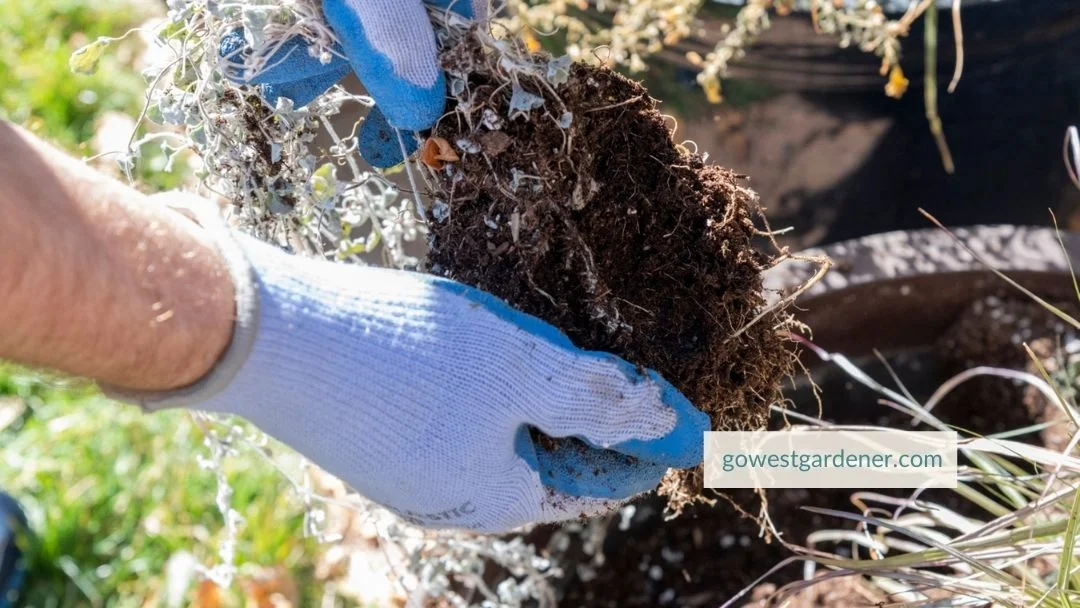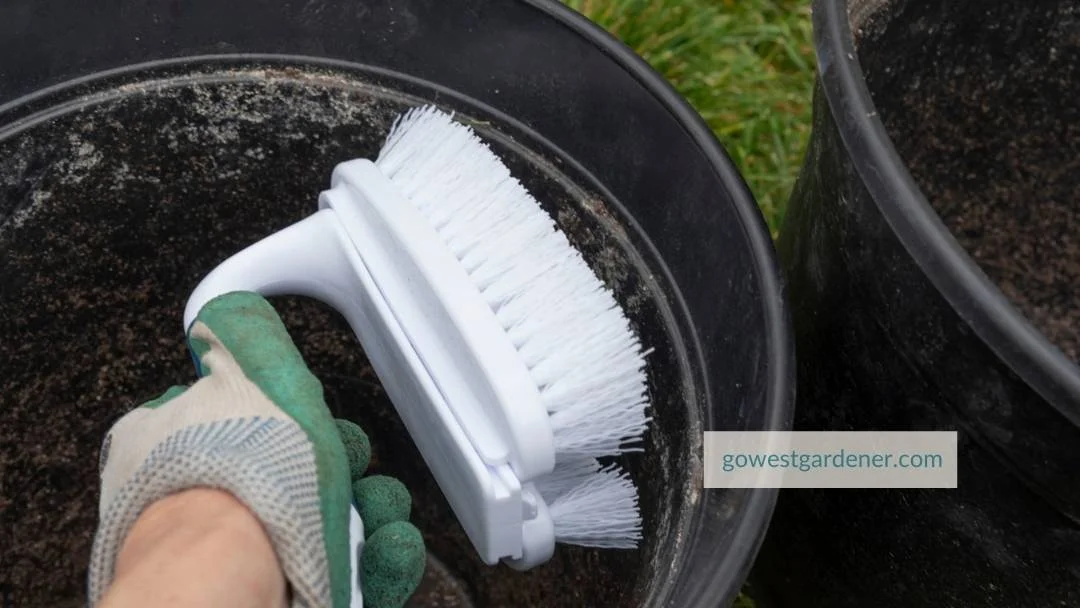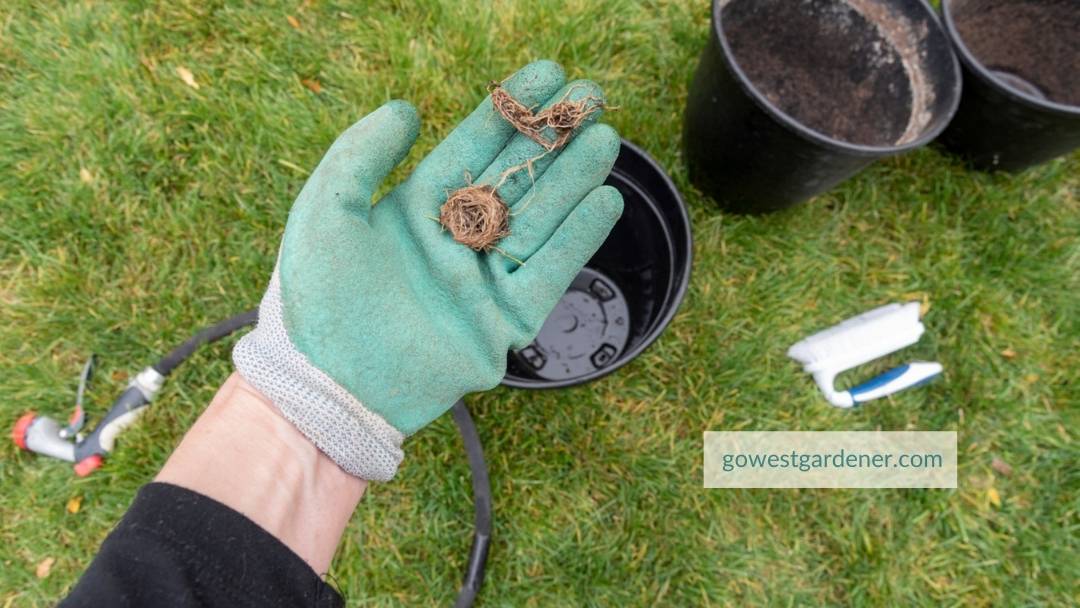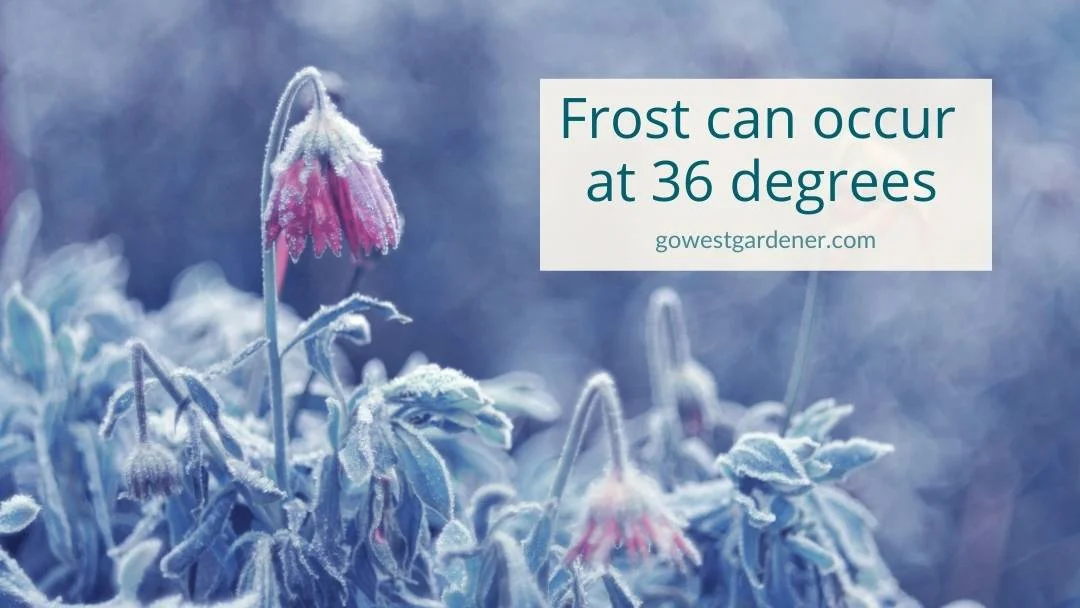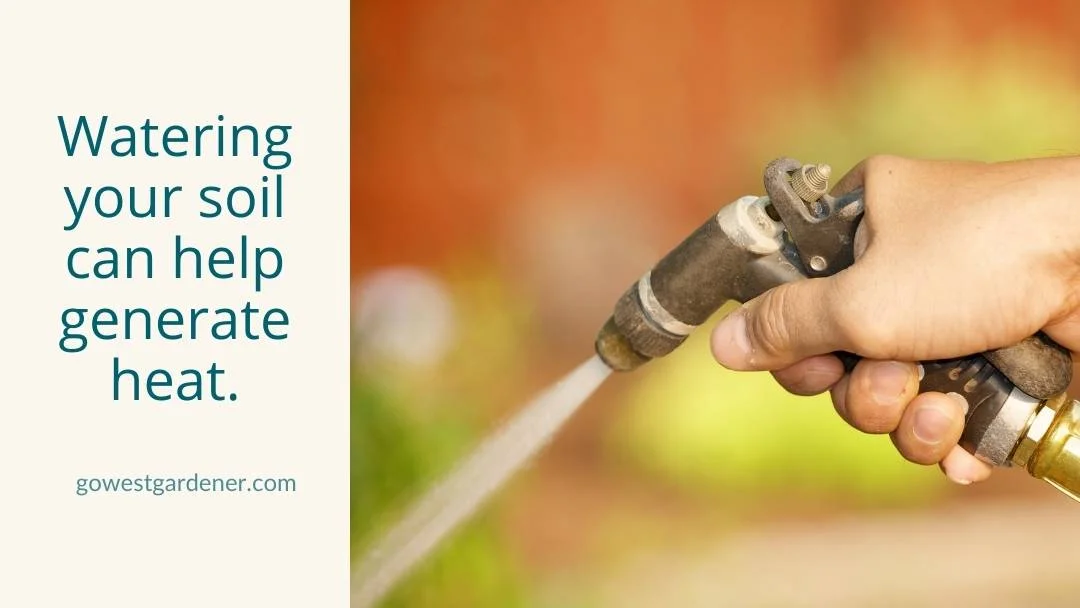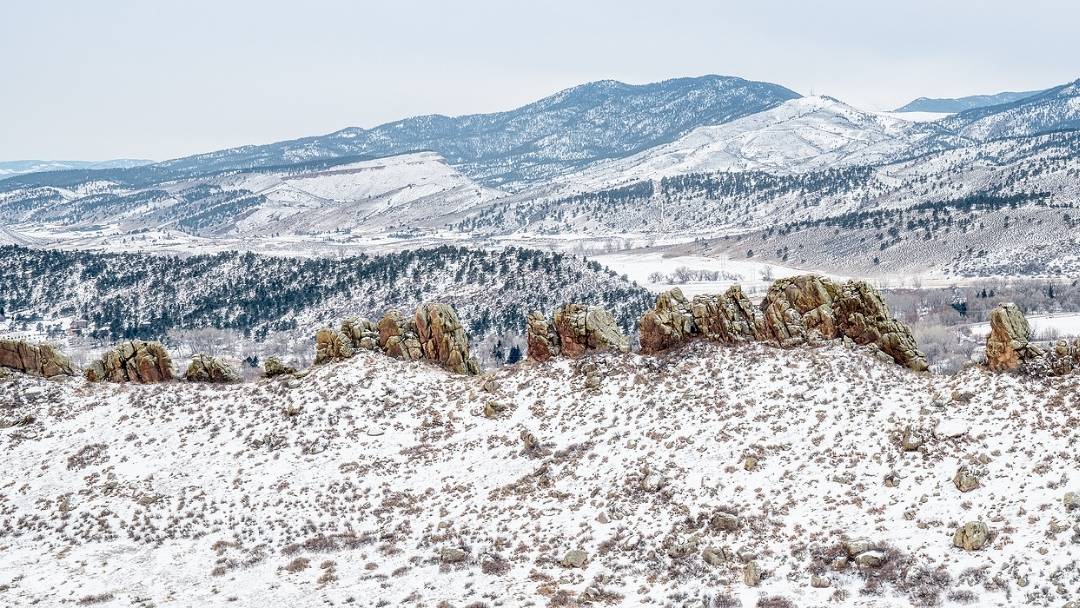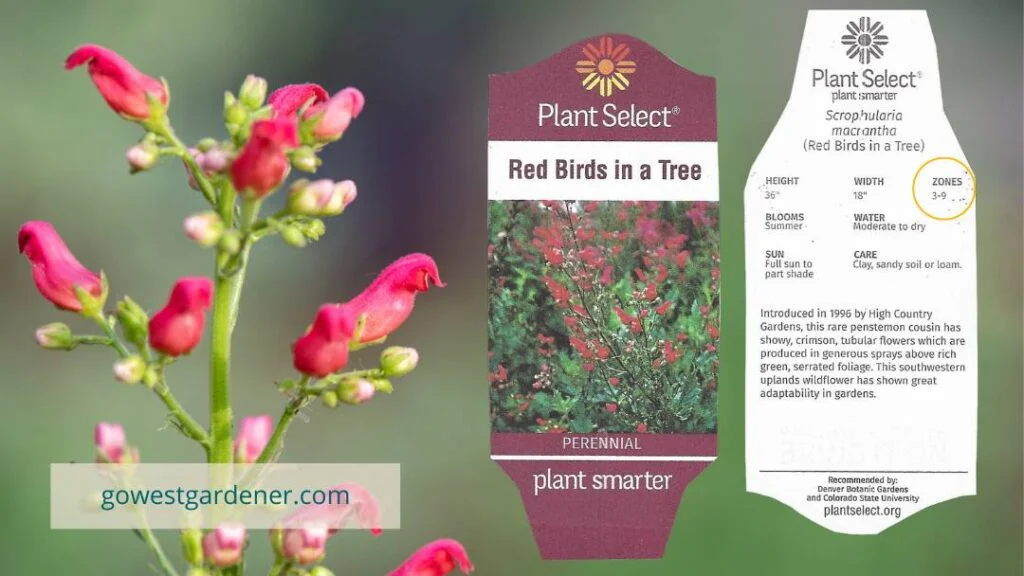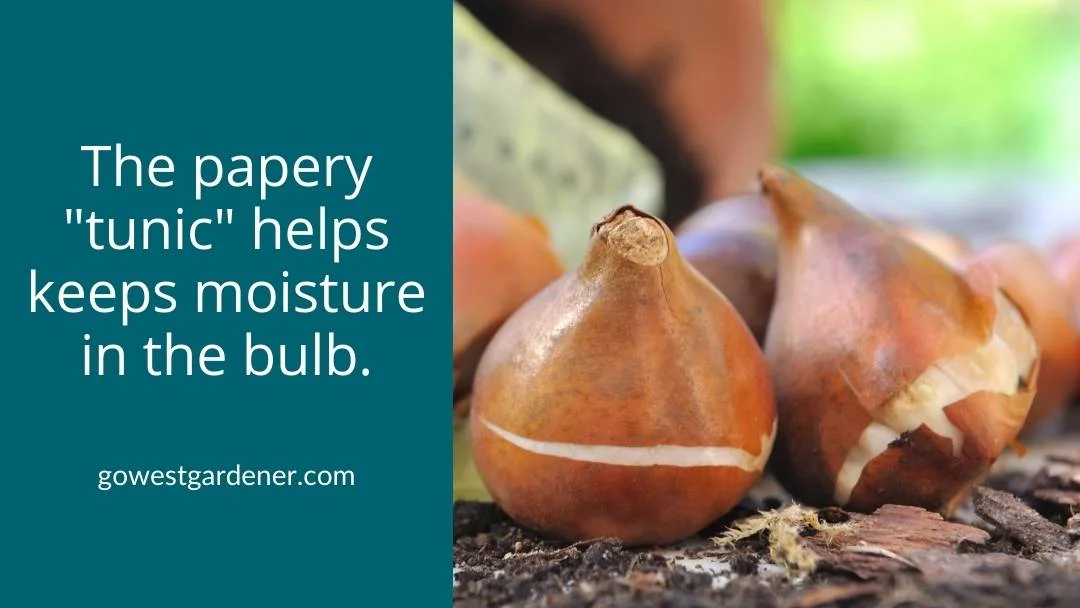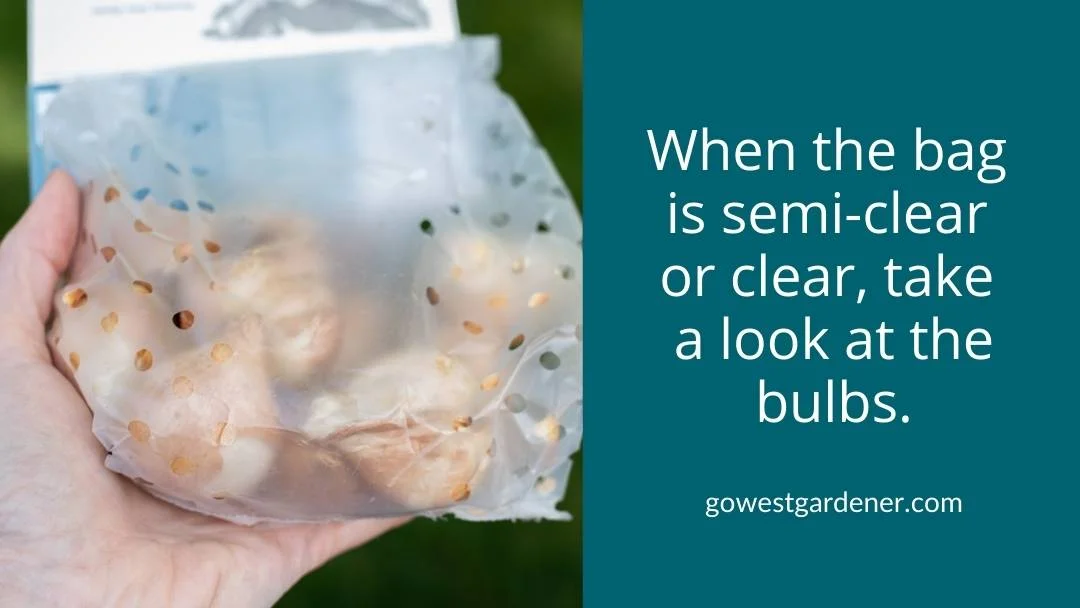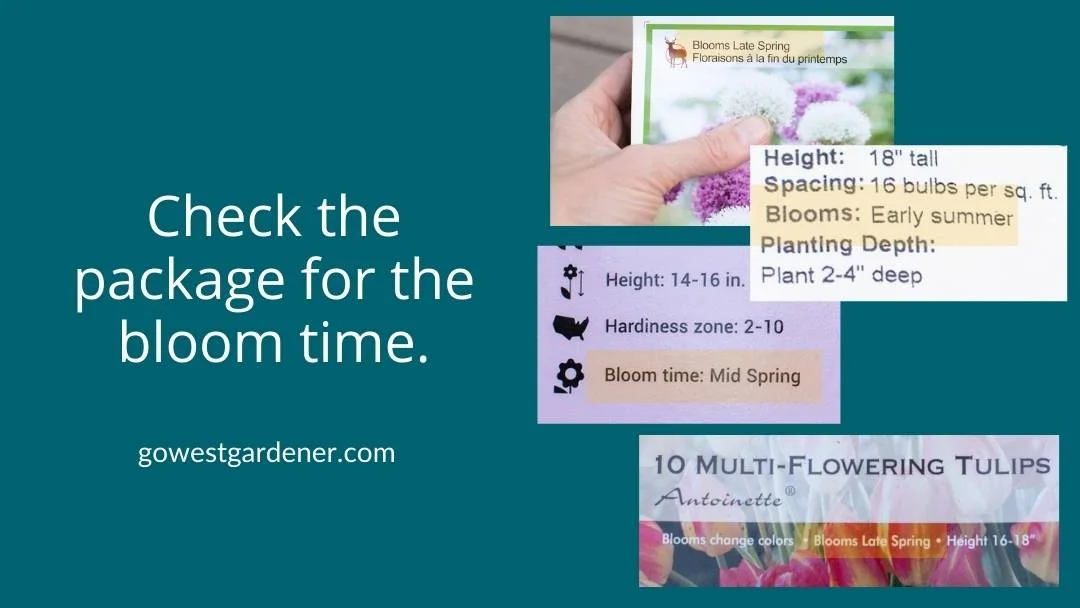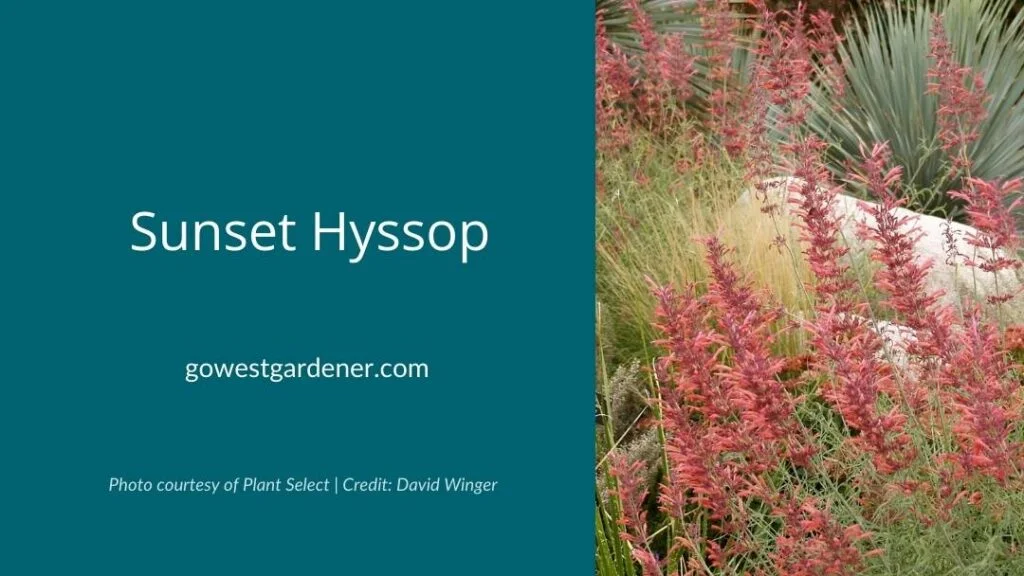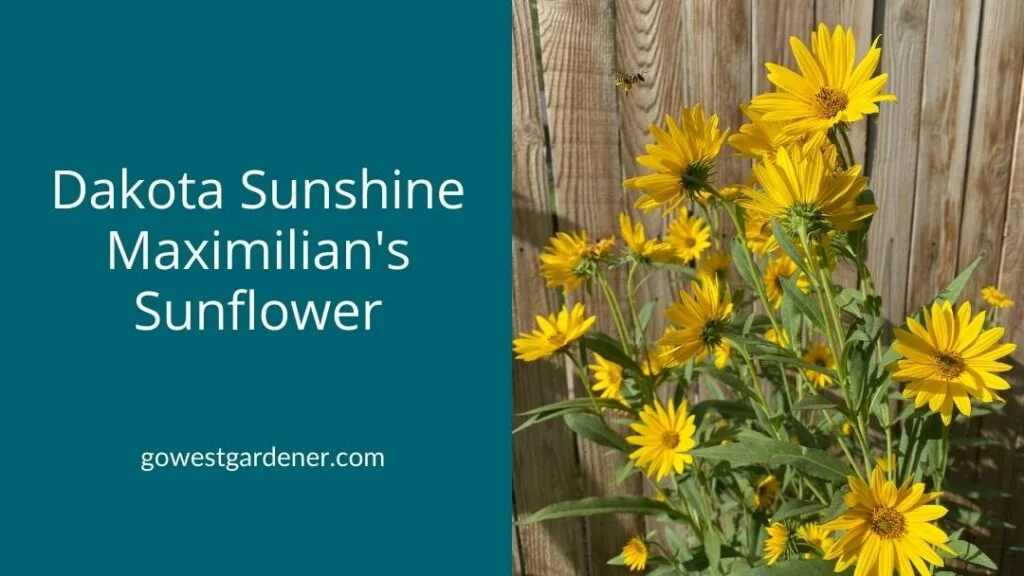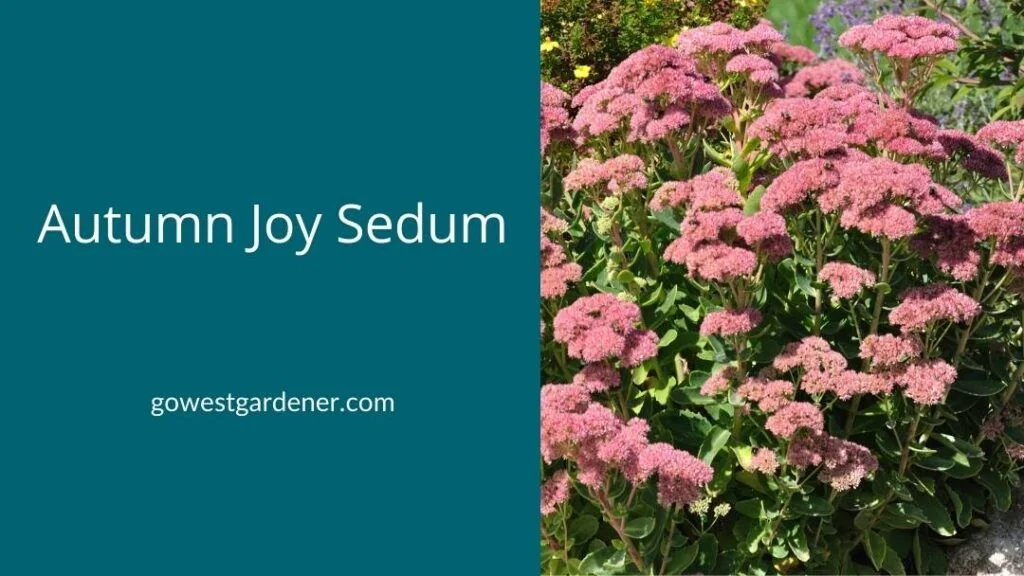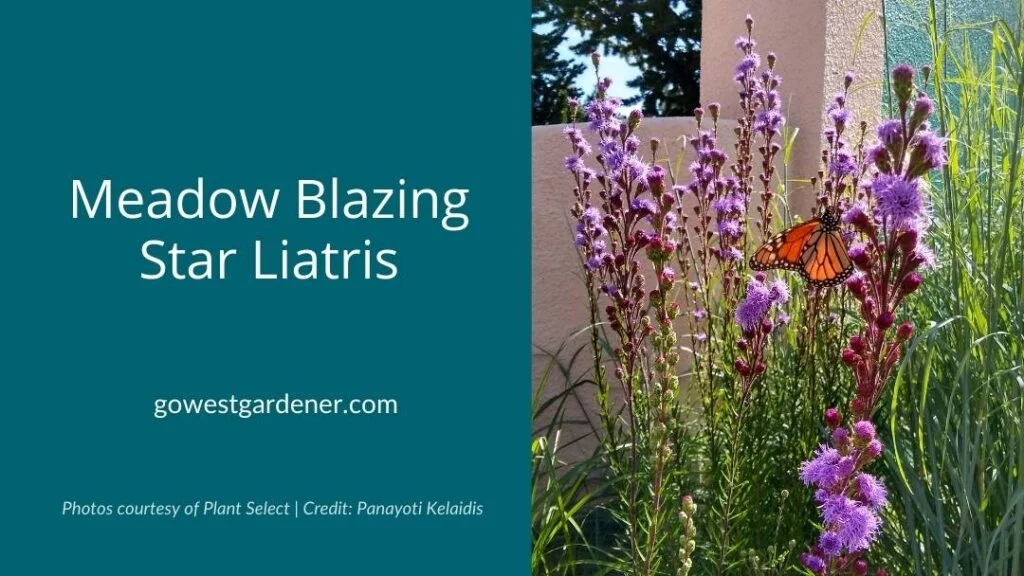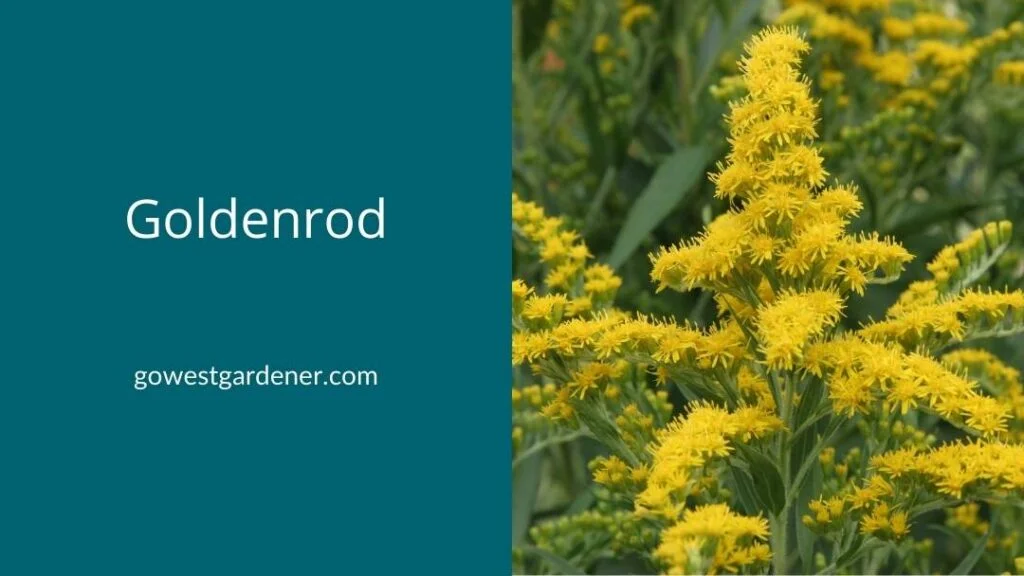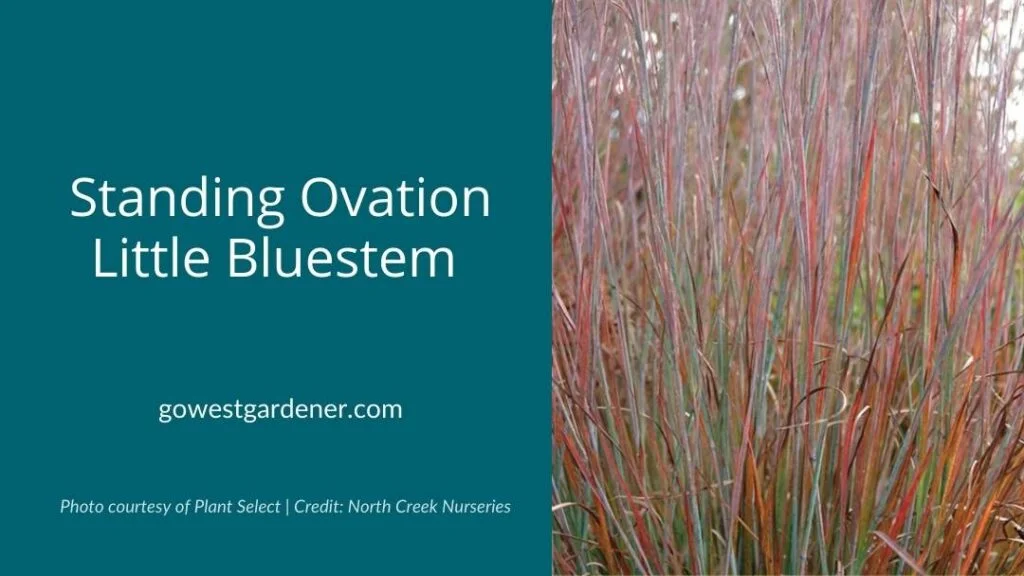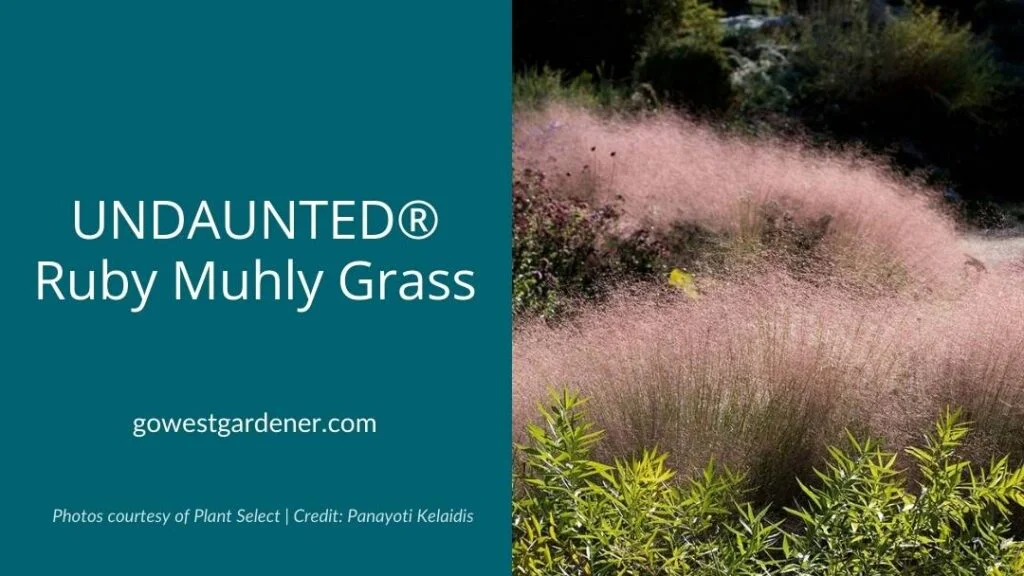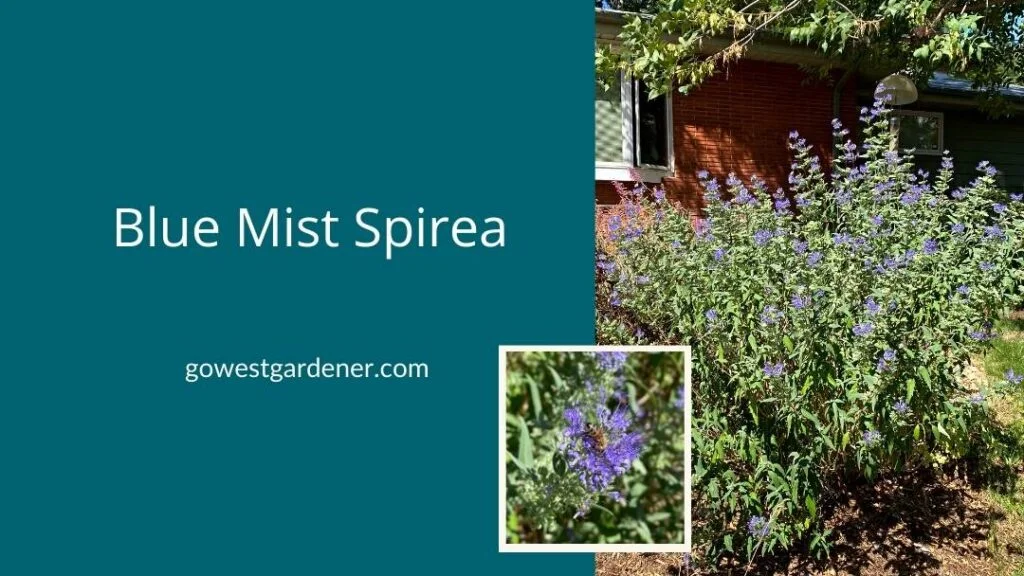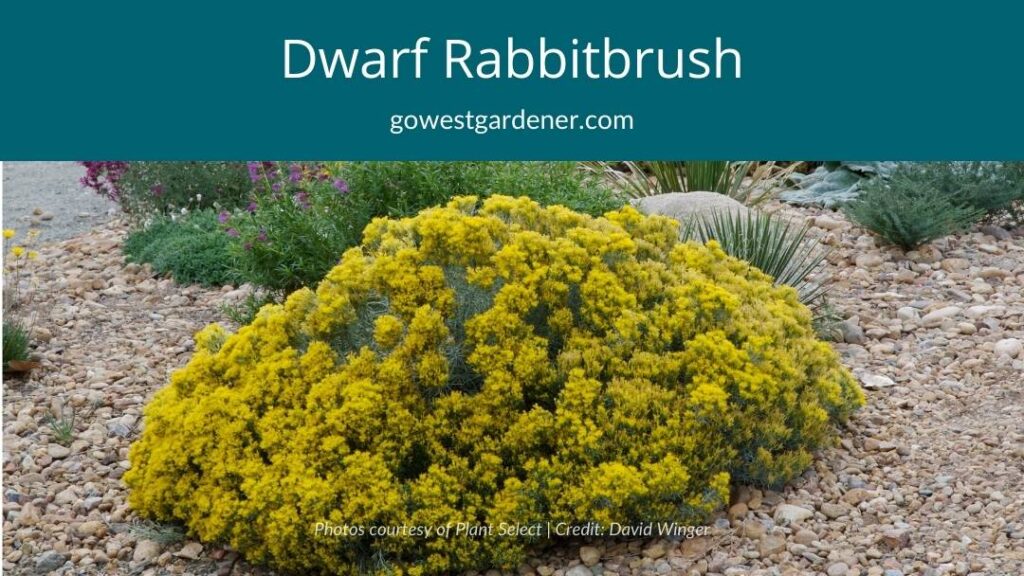
by Ann at Go West Gardener | Updated: Sep 12, 2025 | Flower Garden Basics
When I was first learning how to garden…
I used to think that 32 degrees was the temperature I needed to keep an eye on for my flower plants.
32 degrees is when water freezes, so that must be the point when my flowers will freeze too, right?
But over time, I’ve learned:
There are levels of frost and freezing that affect plants in different ways.
32 degrees isn’t the magic number for all plants.
(Because Mama Nature makes her own rules, y’all!)
So, in this article, I want to share tips I wish I had understood sooner, so you’re a step ahead as a gardener. As our temperatures dip in states like Colorado and Utah, I hope this article helps you understand:
- What’s going on with the annuals and perennials in your garden
- Which flowers you may want to cover and protect (if you want them to last longer)
- Why the heck some of your plants still look good — while others may be a mushy mess!
In gardeners’ terms, annuals are flowers that live for a single year, but don’t return. Perennials are flowers that come back for multiple years.
Here’s a quick summary:
Between 36 and 29 degrees, your most vulnerable flowers are your “tender annuals.”
Tender annuals are your one-season flowers that like warm air and warm soil to grow. They like having “warm feet,” meaning they want their roots to be comfortably warm. These are the guys you definitely want to cover if you want them to last longer. (You can see examples further down this post.)
When you reach 28 degrees or below, more of your flowers will be affected.

Keep in mind, there are always exceptions with Mother Nature. I’ve shared some of them down at the end of this post. Nonetheless, this will give you a good overview.
Let’s start with frost because it often shows up first.
Frost
When temperatures reach 36 degrees (or below) AND the moisture conditions are right
Frost is a thin layer of water vapor that turns into ice on the surface of your plants. When ice forms on the surface of your plants, the water inside your plants can freeze too, causing the cells to rupture and lose all their water.
And this can damage or kill your plants.
If the moisture conditions are right for frost, you can get it when temperatures reach 36 degrees or below.

As I mentioned earlier, between 36 and 29 degrees, frost often has the biggest effect on your tender annuals.
Have you ever had a friend visit from a city like San Diego? When our temperatures are 50 degrees, you’re thinking about wearing shorts… but your friend wants to put on a parka. Your friend from San Diego is like your tender flowers. These plants do not adjust well to the cold.
These flowers are happiest when temperatures are warmer. They’re VERY sensitive to frosts and cold temperatures.
Light freeze
Between 32 and 29 degrees
You know the tender annuals we’ve been talking about? The temperatures in a light freeze will likely kill them. A light freeze takes place between 32 and 29 degrees. If you’re catching your local weather report, you’ll hear your weather forecasters call this a “freeze warning.”
What are examples of tender flowers? You may recognize some of the annuals below.


In my garden, sweet potato vine (pictured above) is ALWAYS the first plant to get nipped.
A light freeze also can damage how your hardier flowers look. Usually, though, it’s just cosmetic damage.
Hard freeze (National Weather Service language)
Between 28 and 25 degrees
A hard freeze should severely damage or kill most of your annual flowers — even your hardier flowers that are happier in chillier temps.
Master gardeners sometimes call this a “moderate freeze.” However, I’ve used the hard freeze language from the National Weather Service here because it’s what you’ll see on a weather app or hear on a forecast. When the weather forecasters say, “There’s a hard freeze warning tonight,” they’re talking about the threshold of 28 degrees or below.
It’s going to be destructive to your annuals if you don’t protect them.
This is the temperature zone where you may start noticing damage to some of your perennials too. For example, you may notice their leaves turning a dark color or becoming a little gooey.
Hard, severe or killing freeze
24 degrees (or colder)
This freeze will likely cause widespread damage to the exposed flowers, leaves and stems on many perennials. (It can depend on how protected your flowers are in your yard, and it also depends on the type of plant.)
This is also the freeze that kills most remaining annuals.
There are exceptions. Pansies and violets, for example, are tenacious little flowers that can survive these freezing temperatures. At lower (warmer) elevations in Colorado, you may see them planted in the fall for spring blooming.

Some exceptions to these guidelines!
Remember, Mama Nature makes her own rules.
Here are exceptions that are relevant if you’re gardening in Colorado, Utah or similar western states:
- If you have young or newly planted flowers, they’re more vulnerable to freezing (and dying) than your plants that have well-established roots.
- If we experience a really big temperature swing, your plants are more vulnerable to damage or death from freezes. In the Front Range of Colorado, we can get 50- to 60-degree temperature swings in the fall and spring. In the fall, this is confusing for our plants (especially our trees). They don’t have time to naturally prepare for hibernation mode, known as “dormancy.” And in the spring, they’ve often started to wake up from dormancy when we get these cold temperature swings.
- If you have flower buds that are opening in the spring, I’ve found they’re more vulnerable to getting dinged by freezes than leaves. The freezes likely won’t kill your plants. You just may not get flowers that year.
- If you’re growing flowers in a protected area of your yard (like along a south-facing fence that’s shielded from the wind), your plants may stay warmer when temperatures drop. I often have flowers that freeze in my front yard, while those same flowers are wide awake and happy in the backyard, which is more protected.
- There are some perennials (plants that come back) that are evergreen. They keep the color in their leaves all winter. You may not notice freeze damage on those plants.
The dates for the first fall frost
We have such varied elevations and conditions in Colorado and Utah, it depends on where you live.
The Front Range of Colorado usually gets its first frost in early- to mid-October. But hey, it’s Colorado. We also can get it in early September. (I’m looking at you, 2020.)
And if you live at a higher elevation, your garden may be at risk for frost year-round.
How to find the spring and fall frost dates in your area
In the fall, if you’d like to find the “average first frost date” for your area, I suggest googling:
- Average first fall frost in {your city}
In the spring, you may want to search for the “average last frost date”:
- Average last spring frost in {your city}
Just a final bit of garden lingo… The “average last frost date” means you’ve reached the point when it’s now less than 50 percent likely you’ll get a frost after this date.
Related topics that may interest you:


by Ann at Go West Gardener | Updated: Sep 12, 2025 | Gardening Tips and Tricks
Looking for fun gift ideas for flower lovers in the West?
You’ll find 11 of the best gift ideas for flower lovers below — perfect for holidays, birthdays, Mother’s Day, Father’s Day and more.
And if you’re looking for gardening gift ideas for yourself… well, then, share this article with friends or leave it out on the kitchen counter where your honey can’t miss it.
(Wink, wink!)
Botanic Garden Tickets, Classes or Memberships
Share the experience of exploring beautiful gardens

If your idea of the best garden gift is an experience (rather than stuff), may I suggest a membership to a local botanical garden?
Taking time to explore beautiful gardens is a fun and relaxing way to discover flowers that grow well in our semi-arid climate. Not to mention, being outside in nature has shown to lower stress. Yes, please!
Want to keep it simple? A one-day ticket is a good gift idea for a flower lover too. You could meet up to stroll through the gardens and then head out for drinks or dinner.
Here’s how to find western botanic gardens near you >>
Pretty, Metal Plant Markers
Keep track of plants in an attractive way



Photos courtesy of Gardener’s Supply Company / gardeners.com
Plant markers come in handy for all kinds of reasons — from remembering the names of flowers, to keeping track of where you planted your spring bulbs (like tulips and daffodils). X marks the spot!
But the plastic plant tags you get when you buy your flowers can break easily, get buried or blow away. Plus, they aren’t that pretty.
Gardener’s Supply Company has come up with a good solution: metal, weatherproof plant markers that are attractive, as well as functional. Made of galvanized steel, these plant markers are 10″ long, so they’re easy to stick into the soil and they’ll last a long time. You can choose either a copper label tag or a zinc-coated label tag.
Give copper plant markers or steel plant markers as a gift to your favorite flower lover!
Flower Photography Classes
Inspire an artistic soul


One thing I’ve noticed about flower lovers is many of us enjoy taking photos of our plant babies.
If your favorite flower gardener would like to get better at taking artistic photos of flowers, there are online classes that can help. For example, Click Photo School has a variety of online training courses to help people channel their creativity. They offer a self-paced course called Macro Style: Finding Beauty in the Details. It’s designed to help students improve their skills with “macro” photography, such as taking close-up photos of flowers.
These types of classes would be a good gift idea for flower lovers who have basic knowledge of how to use a DSLR or mirrorless camera.
These classes probably aren’t the right fit for someone who primarily takes photos with a phone. But worth noting: Click Photo School also offers beginner classes on how to get started with photography.
Gift Cards to Local, Independent Garden Centers
Give the joy of flower gardening

To be clear, I’m NOT talking about a gift card you pull off the rack for a home improvement store. Nope, nope, nope! Step away from the gift card kiosk.
I’m talking about getting a gift card for a local, independent garden center — a store that specializes in plants and flowers. Think of these stores like book shops for people who love to read. To find an independent garden center near you, simply search for: local garden center in [your city or area] or plant nursery in [your city or area].
Prefer something online instead? There are online garden centers. (Yep, they’re a thing!) High Country Gardens is an online retailer of flower plants that are ideal for the western United States. You can find High Country Gardens e-gift cards here. And Gardener’s Supply Company has all kinds of wonderful garden gadgets and supplies. You can find Gardener Supply e-gift cards here.
The flower lover in your life can use this gift money to buy flowers, pretty flowerpots, garden art, special garden tools… Sooooo many ways to spend that money, so little time!
Packets of Flower Seeds
Grow beautiful flowers from a pretty packet of seeds


Seed packet illustration courtesy of Botanical Interests
How much joy can come from a little packet of seeds?
A LOT.
Seeds make fun hostess gifts and stocking stuffers for flower lovers.
If you’re new to choosing flower seeds, I suggest zinnias. Unlike many seeds, zinnias can be grown right from the ground, so they’re easier to grow. Zinnias are native to Mexico. This means they’re heat tolerant, which is awesome for our hot summers in Colorado, Utah and similar western states. These flowers offer vibrant color for one summer, but typically won’t return. Best of all, zinnias make beautiful “cut flower” arrangements. You can cut them, put them in vases and watch as even more blooms fill in!
In the photos below, you’ll see the “Cut and Come Again” zinnias I grew from seeds last summer and my last bouquet of the season. (There are a couple of cosmos flowers tucked in the bouquet too.)

I get many of my seeds from Botanical Interests. They’re a seed company with Colorado roots. Each of their seed packets comes with gorgeous illustrations and helpful instructions. Their seed packets are little works of art — so they make good flower gardener gifts!
Botanical Interests sells seeds to gardeners across the country. So, if you want to buy flower seeds, just make sure you’re choosing flowers that are a good fit for where you live. (They have great customer service and are happy to help.)
Shop zinnia seeds here >>
Cute Shirts for Flower Lovers
Show the world you’re a plant mom (or plant dad)

Shirts for plant lovers (above): Piper & Ivy
I love a cute plant shirt. A friend of mine introduced me to Piper and Ivy with a “just because” gift, and I’m hooked.
Check out the plant lover t-shirts from Piper and Ivy here: Easily distracted by plants + and other plant lover shirts >>
Plant Books for Western Gardeners
Discover flowers that thrive in our semi-arid climate

In my opinion, one of the trickier things about gardening in the semi-arid West is figuring out which flowers, shrubs and trees grow well here. Many plants from other parts of the country don’t like our growing conditions — or they’re gas-guzzlers for water.
One of my favorite books for discovering beautiful, drought-tolerant plants is called: “Waterwise Plants for Sustainable Gardens.” This book is ideal for gardeners of all levels — from new gardeners to avid gardeners. It contains helpful photos and lots of inspiration.
Sometimes, you can find this book at local, independent garden centers. Or shop for the book online here >>
Floral Snips
Keep flowers looking pretty and tidy

Floral snips are like scissors for plants. They’re a good gift for flower gardeners, especially new gardeners. Floral snips make it easy to trim off dead blooms, so new flower buds can grow in. Best of all, you can be really precise in your cuts, so you don’t accidentally remove more of the flowers than you intended.
I keep a pair of floral snips near my back door in the summer. That way, I can grab them when I walk outside and quickly tidy up my flowerpots and garden beds. Snip, snip, snip!
You can find floral snips at your local garden center and on Amazon.
Local Flower Bouquet Subscriptions
Brighten a home with fresh and unusual bouquets



Photos courtesy of Piper’s Lane
If you’re looking for creative or unusual gift ideas for flower lovers, give a subscription to a local flower service.
(Imagine having a bouquet of freshly-cut flowers on your kitchen table each week during the summer. Ahhhhh!)
These aren’t your same-old, same-old bouquets from the grocery store. I’m talking about fresh and unique bouquets from a local flower farmer. These flowers:
- Smell wonderful because they’re freshly picked from the garden
- Contain unusual flowers you just can’t find in store bouquets
- Have been grown close to you rather than flown in from South America, which is where many of the store bouquets come from
If you live in the south Denver area, definitely check out Piper’s Lane. The founder, Kristen, has an urban farm and offers a local, flower bouquet subscription service. Kristen’s beautiful bouquets are made up of unique and seasonal flowers that are grown from seed without chemicals. You can choose from several types of subscriptions (which Kristen calls “shares”) in the spring, summer and/or autumn. You pay in advance. Then, you simply pick up your flower bouquets on your designated weeks.
Live someplace else?
To find local flower farmers near you and explore their unique services, check out the Floret flower farmer network.
Decorative Garden Art
Add a pop of color to flowerpots and garden beds


Photos courtesy of Iron Bird Salvage
Gotta love a little garden bling!
These rustic, metal flowers from Iron Bird Salvage look super-cute tucked in flowerpots or planted in the garden. I have several “bunches” of metal flowers in my shade garden. They add a pretty pop of color, and friends always ask about them.
These flowers may look painted, but they’re actually made out of recycled materials, like old wheelbarrows, toolboxes, wagons and more. Each flower is the color of the reclaimed metal item it’s being made from. You can buy as many flowers as you like, and you get to choose your colors.
The flowers are cut by hand, so they’re all unique. And because they’re made from reclaimed metal, they have imperfections. That’s part of the rustic charm.
They make fun gifts for flower lovers!
Shop for these decorative metal flowers here >>
Paperwhite Bulbs (Narcissus)
Brighten up winter with these beauties

Photo courtesy of Longfield Gardens
Brighten up a looooong winter with the gift of paperwhite bulbs. These flowers are easy to grow inside during the winter. (Yep, indoor winter flowers!)
Check out the Longfield Gardens website to:
Happy gifting!
Related topics that may interest you:
Was this article helpful to you? Please share it!

by Ann at Go West Gardener | Updated: Sep 12, 2025 | Gardening Tips and Tricks, In-ground garden, Western Container Gardening With Flowers
When you’re strolling through the garden center or dashing into the grocery store and all those pretty flowers are smiling up at you, it’s hard not to choose the showiest flowers you see.
“Well, helloooooo there.”
But if you’d like your fall flowers to last longer, hold up!
There are ways to choose flowers that last longer… and hint, this means resisting the urge to buy the flowers that look the prettiest.
TIP 1: Look for the flower plants with a lot of new buds (rather than just open blooms)
Do you see the yellow mum plant below? The showy, yellow flowers have opened, and they look beautiful.
But because these flower blooms have already opened, they likely won’t last as long when you get them home. They’ve already used up some of their bloom time.

Instead, look for plants that resemble this second set of mums (below).
Do you see how this plant has lots of new buds?
These flowers should last longer for you when you get them home because these flower blooms haven’t opened yet.


You can use this tip when buying annuals OR perennials
I use this tip when I pick annuals (the one-season flowers) for my flowerpots in the spring and fall.
I also use it when buying perennials (the flowers that come back every year) for my western garden.
If you want your flowers to last longer, it helps to look for plants with new buds. They don’t always look the prettiest in the store, but that’s just because they haven’t fully opened yet.

But what if you aren’t sure what color the flowers are going to be?
Great question! Sometimes it’s hard to know what the color is when the flowers haven’t opened yet.
Tip #2: There are several ways to figure out flower color
- Look for any open flowers on the plant.
- Check the plant tag to see if the plant tag lists the color. Sometimes, the flowers have the color in their name or in the photo on the tag.
- You can check the nearby plants. If the same type of flower has already opened, you can see the color.

Tip #3: For many flowers, their blooms don’t last as long when it’s hot
Where I live in Colorado, we can get heat waves well into the fall. It may be the same where you live too.
If you want to buy fall flowers — like mums — and you want them to last as long as possible, you may not want to buy them the week that blazing hot temperatures are in the forecast.
Those flowers tend to go through their blooms quickly when it’s hot, meaning they won’t last as long.
Just a lil’ something to think about!
Related tips that may interest you:


by Ann at Go West Gardener | Updated: Sep 12, 2025 | Best Flowers for Colorado, Utah & Similar States, Gardening for Pollinators, Waterwise Gardening in the Intermountain West
Most of these spring flowers are low maintenance too!
Let’s say you want to add a splash of color to your spring garden, but you live someplace dry, like Colorado or Utah. It would be nice to find spring flowers that don’t need a lot of watering, right? (Less work for you—and good for Mama Nature too!)
The question is: Are there drought-tolerant spring flowers? Yes!
Here are 5 drought-tolerant spring flowers that can grow well in sunny, dry gardens in Colorado, Utah and similar states. They’ll keep your watering and work to a minimum.
Most of these flowers get planted in the fall.
Crocus

Crocuses are drought-tolerant spring flowers that come in a variety of colors, like purple, white, gold, yellow and lavender.
You plant crocus bulbs (known as “corms”) in the fall, and they bloom early in the spring. Their early spring blooms are important because they can offer nectar and pollen for early emerging bees. Plus, it’s nice to see pretty color in your garden after a long winter.

These small flowers tend to look the showiest when you plant a mass of them together (“en masse” or “in drifts”). Crocuses also can look pretty when you plant them in small clumps of flowers. Just avoid planting them individually because you won’t get that showy splash of color.
Garden lingo bingo: Crocuses “naturalize” easily. This means they should increase in number and come back each year. Yesss!
Wildflower tulip

Wildflower tulips are another drought-tolerant spring flower for sunny, dry gardens.
They’re the smaller cousins of the showy tulips you’ll see in the spring. Wildflower tulips aren’t as flashy as their cousins, but they tend to be hardier, more reliable and last many more years.
These tulips are sometimes called “species tulips.” These lil’ guys are from the wild species of tulips.
Wildflower tulips have more of a natural, western vibe than their cousins. They’re a pretty addition to sunny rock gardens, front borders of gardens and natural-looking landscapes.
You can even plant them in “warm season” lawns—grass that doesn’t green up until it gets hot—like buffalo grass. Warm season lawns are usually drought tolerant and don’t need a lot of water, so wildflower tulips are a good match.
Wildflower tulips are a spring flowering bulb. You plant them in the fall, and they bloom in early- to mid-spring. They’re another spring flower that can “naturalize” in gardens. They should multiple and come back each year.
Pollinator tip! Wildflower tulips offer a good source of nectar and pollen for many hungry bees that are emerging after winter.
Muscari / grape hyacinth

First, a lil’ more garden lingo bingo…
In casual conversation, you’ll hear these flowers called both muscari and grape hyacinth. (Can you see their resemblance to small clusters of grapes in the photo above?) I suggest using the name: “muscari.” Why? Because there’s another spring flower known as a hyacinth too, but it isn’t related. It can get confusing.
Muscari are small flowers that bloom in mid-spring.
One of the most popular muscari (Muscari armeniacum) comes in a beautiful, deep blue color. Yes, blue! But you can find other colors too, including white, purple and yellow.
This is another flower that tends to look showiest when you plant quite a few of them together. I think they look pretty when they’re planted next to silver-leafed plants. I love the contrast.
Muscari are drought-tolerant spring flowering bulbs. You plant them in the fall, and they bloom in the spring. They can tolerate clay soil (the dirt that many of us have), as well as dry conditions. Very helpful for gardens in Colorado, Utah and the intermountain west!
This is another flower that will attract pollinators, like bees. They’ll naturalize too (coming back year after year).
Hybrid tulip

These are the classic tulips you’ll see in the spring. Typically, they don’t mind our dry conditions in states like Colorado and Utah.
Hybrid tulips can be short lived and a little unpredictable in the intermountain west. Some will only last a few years. But they sure are showy while you have them.
Worth noting… tulips are popular with more than just people. Critters love them too. If deer, rabbits, squirrels or other wildlife have been known to treat your garden as an all-you-can-eat buffet, you may want to skip tulips. Fending off critters may not be a low maintenance experience.
Hybrid tulips grow from bulbs that—yep, you guessed it—you plant in the fall.
Bearded iris

Bearded irises come in a full spectrum of colors—just about every color you can imagine!
They remind me of where I grew up in Michigan. I was excited to learn these late spring flowers also thrive in sunny, dry gardens in the West. I’ve seen bearded irises growing as far south as the Tucson Botanical Gardens in southern Arizona.
There are many things to like about bearded irises in semi-arid states like Colorado and Utah.
Bearded irises are drought tolerant, so they look good even with our low precipitation. You can grow them in our alkaline soils (our tricky western dirt). They’re rabbit resistant AND deer resistant, which means rabbits and deer prefer to eat other plants first. And overall, irises don’t like a lot of fuss.
Yay for low maintenance spring flowers!
Bearded irises don’t grow from a bulb. Instead, they grow from “rhizomes” you plant in July, August or September. Rhizomes look like narrow, little potatoes. A rhizome is actually a modified stem of the plant. (Isn’t nature cool?)
When you plant your irises from July to September, you’ll give them time to establish their roots before it gets too cold.
Related topics that may interest you:


by Ann at Go West Gardener | Updated: Sep 12, 2025 | Gardening Tips and Tricks, Western Container Gardening With Flowers
Friends, the end of the flowerpot season is like the end of a dinner party.
You’ve had an amazing evening of laughter, stories and delicious food. (“Oh my God, that was so good! I need that recipe!”) Your heart feels so full.
And then… you walk into your kitchen.
Sweet Mother of Lassie.
Your counters are lined with dirty dishes, empty wine glasses and serving utensils you didn’t even know you owned. You have caked-on pots and pans tucked into the stove, the refrigerator and other secret hidey-holes.
And ugh, your dishwasher only holds so much!!
I always have a similar feeling after a season of gardening.
After a summer of pretty flowers, there’s some flowerpot clean-up to do. And let’s be real, the clean-up isn’t going to be the highlight of your season.
“Wait, whaaat??? I need to clean my pots?”
Rest easy, you don’t have to do anything you don’t want to do!
But a little clean-up can make a BIG difference for your flowers next season.
I didn’t used to clean my flowerpots, but I have become a believer after experiencing some issues. For example, salt residue can build up on the inside of your pots. It can create problems for your young plants next season. (Headaches, hassles and struggling plants!)
With just a little cleaning, you eliminate those issues.
Here’s what to do with your flowerpots when your flowers are dead.
First, here are supplies for cleaning your pots that are helpful to have handy.

1) Empty out the dead flowers, roots, and used potting soil.
I suggest you set up a garbage bag and a compost bag. Compost bags are often available in the fall at local hardware stores.
- The trash bag is for dead plants that looked diseased. Throw away any plants that looked diseased at the end of the growing season, as well as all the potting soil from that flowerpot. (No judgment! These things happen.)
- The compost bag is for dead flowers and roots that were healthy. They can get turned into “compost.” Compost is an awesome material we can add back into our garden soils to improve their quality. Pull the dead plants out of your flowerpots. Add all of your dead plants that were healthy at the end of the season to the compost bag. (You also can create your own compost pile, but that’s a topic for another time.)


Click here for options for what to do with old potting soil >>
2) Clean your flowerpots.
When your flowers are dead and you’ve emptied everything out of your pots:
- Brush off any lingering dirt and white residue from the inside (and bottom) of your pots. I use a soft bristle brush from the hardware store. Avoid brushes that are too stiff because they can scratch your pots. If you can’t get the white residue off with a brush… You can try using a plastic puddy knife to scrape and get under the tough spots. It works pretty well, particularly on residue at the bottom of your pots. You also can try soaking your flowerpots in a mixture of vinegar and water. (If you’re wondering what the white residue on your flowerpots is, scroll down for quick explanation.)

- Rinse your flowerpot with water. I like to set the hose nozzle on the “jet” setting. It typically does a good job removing dirt.

- Remove any roots that have grown into the holes at the bottom of your pot. You want to make sure the holes are free of any debris for the next growing season, so water can drain freely from your pots.

- Repeat these steps for each pot.


“What IS that white stuff on my pots?”
Many of us have hard water. That white residue is likely a build-up of calcium and salts from watering and fertilizing.
It won’t be great for your plants’ roots next season.
I’ve found it’s easier to get the white residue off when it’s fresh in the fall, rather than waiting until the spring.
It’s kind of like the pan you cook lasagna in. That cheese residue will be much easier to get off before it fully hardens. Clean the residue while it’s still fresh, if you can.
But no worries if you decide to wait until spring!
3) Store your empty flowerpots for the winter.
To help keep your pots clean and protect them from cracking or breaking:
- Store your empty flowerpots out of the elements, if possible. Ideally, you’d store them someplace that stays above freezing temps, like an attached garage. That way, pots that are vulnerable to freeze damage and breaking (like terracotta pots and ceramic pots) are less likely to crack and break. But if that isn’t an option, store your pots in a shed or on a covered porch.
- If you leave your pots outside, you may want to turn your pots upside down or cover them to keep them clean and keep moisture out.
You may be wondering: “Do I have to protect my flowerpots?”
Nope, you don’t have to, and your flowerpots may be fine!
But just understand, freeze damage can happen, depending on your winter.
See the photo below of one of my neighbor’s flowerpots for an example. I have a bunch of cracked terracotta pots from one of my first winters in Colorado. Oops.
Most years, I stop here and call it good.
And if you’ve made it this far, awesome! You’re well on your way to getting next season’s flowers off to a great start.
But it’s worth noting…
The steps above haven’t sterilized our flowerpots.
You may be thinking: “Ummmm, there’s more??? Why do I need to sterilize my flowerpots?”
Plant diseases can carry over from year to year — and not just in the soil, but also on the pot itself. This means a disease you had this last season could ruin next season’s flowers.
So, it’s a good idea to sterilize your flowerpots if:
- You had (or suspected you had) diseased plants.
- You’ve purchased used pots. It’s best to clean them before you use them.
- You want to grow flowers from seeds in your flowerpots. Seedlings need an environment that’s as clean as a bottle for a newborn baby.
If any of these apply to you and you’re willing to go a step further, here are tips to sterilize your flowerpots.
Do you have to empty and clean your flowerpots?
Nope, it’s gardening. You can do what you want!
But cleaning up your pots when your flowers are dead can:
- Get your plants off to a healthy start in the spring.
- Give you fewer chores at the start of next season. (Yesssss!)
- Help your pots look good and last longer.
You’re cleaning up after this year’s flower party, so you’re ready for an amazing season next year.
Related topics that may interest you:


by Ann at Go West Gardener | Updated: Sep 12, 2025 | Flower Garden Basics, Gardening Tips and Tricks, Western Container Gardening With Flowers
You know you’ve entered the “joys of western gardening club” when…
It feels like summer one day… and the next day you’re bracing yourself for frosts, freezes and snow.
(I’m not crying. I have something in my eye.)
If you’d like your summer annuals — your one-season flowers — to stay alive, it’s helpful to find ways to protect them from Mother Nature’s cold snaps.
So, in this article, you’ll find 6 ways to help protect your tender flowers from frosts and freezes.
You’ll also find a tip to help protect your trees and shrubs, which can be vulnerable to sudden cold spells too.
Protecting your sensitive plants is about finding ways to keep them warm.
When you see your neighbors frantically covering their tender flowers, what they’re trying to do is keep their plants warm.
If you can keep your plants just 5 degrees warmer than the cold conditions around them, it often can make a big difference for your plants.
As you look for ways to protect your flowers, ask yourself:
“Is what I’m doing going to help generate or retain heat around my plants?”
If it’s not, skip it and look for another option.
Here are 6 ways to keep your flowers warm:
1) Thoroughly water the dirt (aka, “soil”) around your flowers.
If watering feels counter-intuitive when we’re talking about freezing temperatures, I’m with you.
But watering your soil before a freeze can actually help warm your plants. And remember, heat is the goal here.
Damp soil can keep the surface air around your flowers up to 5 degrees warmer than surrounding temperatures.
Why?
Because moist soil retains heat better than dry soil. It can warm up during the day and help offer heat at night.
Pro tip: It helps to water during the day. That way, the soil has time to warm up, and any water that splashes on your plants has time to dry before temperatures drop. (Wet leaves, flowers and stems freeze more quickly than dry ones.) When you’re done watering, be sure to unscrew your hose, so you avoid any issues with pipes freezing and breaking. Because we’re trying to remove headaches, not create them, am I right?
2) Move your pots of flowers to a warmer, protected area.
I know some flowerpots are too heavy to move, but move what you can.
A mudroom or an attached garage can work well as a temporary holding space when temperatures dip.
If you can’t bring your containers inside, even moving them to a dry, covered area on a porch or deck may help.
I would try to put your containers right next to your home out of the wind. Look for a spot where the walls may radiate some heat. Depending on how cold it’s going to get, you also may want to add on tip #3 below.
Keep in mind, warm air rises and cold air sinks, so avoid moving your pots to the low spots in your yard.
3) Build a “tent” around your flowers.
This one sounds a little complicated, but let’s keep it simple.
Here’s all you’re trying to do. You’re covering your flowers with a cloth fabric to keep the heat in, but you’re staking the fabric up (the best you can) so it doesn’t touch your plants.
The photo above may look like at an attempt at a spooky Halloween display, but it’s actually an impromptu tent for my cosmos flowers.
To create a tent, you can use:
- For your frame: Metal rods, tomato cages, lawn furniture, shepherd’s hooks for hanging flower pots, etc. Get creative!
- For your cover: Woven cloth fabrics like old bed sheets, pillow cases, towels, a lightweight picnic blanket… basically, the items you want to donate from your linen closet. You also can use “garden fabrics,” like a commercial-grade landscape fabric or heavier types of “floating row covers” (which are fabrics used in vegetable gardening). I would look for these garden fabrics at local, independent garden centers and online.
- For your clips: You can use safety pins, binder clips from your office, plastic clips, etc.
If you want to keep it really simple, I’ve given you a pre-made tent option at the end of this section.
So, why does using cloth fabric matter?
It all comes back to heat. Woven cloth fabrics offer better insulation than plastic materials. They don’t conduct the cold like plastic does.
Ideally, you want to extend the tent all the way to the ground.
I’d extend your tent all the way to the ground (even over a flowerpot), so you can capture the heat from the ground. Pin or clip the fabric together to keep cold air out and warm air in.
If you have gaps in your tent, you’re losing heat.
If possible, try not to let the fabric touch a plant:
- This helps keep the warm air circulating around your entire plant.
- And in some cases, if wet fabric touches your plant, you may accidentally cause the damage you’re trying to prevent.
If this sounds like too much work, there are pre-made frost protection tents for your plants.
You can see an example in the photo below.

Search online for phrases like:
- “Plant protection tents” or
- “Pop-up plant protectors”
These tents quickly pop up. They’re easy to use. And because they flatten up when you’re done, they’re easy to store.
4) Avoid using plastic sheets to cover your plants, unless you have no other option.
Why?
Because plastic doesn’t have the insulating properties of woven fabric. Plus, if plastic is touching your plants, it can conduct the cold and contribute to the damage you’re trying to prevent.
But if you don’t have other options, make it work, baby! It can be better than nothing. Just prop it up, so it doesn’t touch your plants.
5) Place empty containers over tender plants to trap warmth from the ground around your plants.
You can use boxes, buckets, recycling bins, garbage cans, empty flowerpots and other containers. These devices can work well if you’re going to get snow because they’re unlikely to collapse under the weight.
Just remove these covers during the day when it warms up.
6) Get creative with ways to generate heat around your flowers.
You may see your neighbors filling milk jugs with hot water or placing warm bricks near their plants. Both options can create warmth in the shelters you’re placing around your plants. It’s like a little campfire for your plants.
All these methods should work well for BRIEF temperature dips.
But if you’re going to get an arctic blast (especially one that lasts a few days), you may need a stronger heat source.
Or, you may want to try doubling up on the methods above.
Do you have to do anything when a frost or freeze is in the forecast?
If you’re reading this article in the fall, nope, you don’t have to do anything.
You can sit back and see what Mother Nature throws at you, especially if you’re ready for your flower season to be over. But if you’d like your flowers to last a little longer, it helps to protect your plants.
In the spring, it’s a good idea protect your newly-purchased flowers, especially your summer annuals. These are your tender flowers that grow for one season only and don’t like frost.
That way, you don’t have to buy replacement flowers!
Let’s chat for a sec about your trees and shrubs.
At our lower elevations in states like Colorado, we can get big temperature swings that are really hard on our trees and shrubs.
When temperatures plummet in the fall, your trees and shrubs don’t get the chance to ease into dormancy.
These plants haven’t had a chance to gradually turn the water in their veins into “antifreeze” yet.
Even when we aren’t facing big temperature swings, our trees are often drought-stressed.
And “stressed” is not the way you want them entering winter!
It can help to give your trees and shrubs a deep, soaking water before a freeze too.
If you have a newly-planted tree or shrub, water the root ball area.
Otherwise, soak the ground around the outer circumference zone of your tree (out where the branches of leaves end), rather than soaking the trunk area.
This outer area is known as your tree’s “drip line,” and it’s where your tree’s roots are actively absorbing water.
Going from a beautiful garden to a freezing mess stinks, but it’s part of gardening life in western states like Colorado, Wyoming and Utah.
If you think it’s tough to be a gardener here, remember it’s even tougher to be a plant!
But you’ve got this!
If you want to protect your tender flowers and keep them alive, I hope these tips help you feel more confident in what you’re trying to do.
Related topics that may interest you:


by Ann at Go West Gardener | Updated: Oct 20, 2025 | Gardening Tips and Tricks, In-ground garden
It was a winter week to make a gardener shudder.
In February 2021, an arctic blast covered the western United States like a frosty ice pack from the kitchen freezer. Where I live in Colorado, the high temperature for several days was a not-so-balmy zero degrees. The nightly lows danced between -15 and -20 degrees below zero.
(It may have gotten even colder where you live!)
In the spring, many of my “marginally hardy” perennials did not come back.
Ugh.
Marginally hardy perennials are your “iffy” plants.
They could come back after winter. They should come back if your winter is mild. But if you get tough winter conditions or extreme colds, they’ll die.
So, if you want to know, “How can you tell if a perennial is marginally hardy?”, read on.
You’ll find a helpful way to tell if a perennial is marginally cold hardy.
Use this tip to choose plants that are more likely to handle our western weather and return to your garden!

First, a disclaimer…
(Don’t you love when people lead with disclaimers?)
There are MANY factors that can affect whether perennials will survive winter and return to your western garden in the spring — things like moisture, drought, wind, root health, micro-climates in your landscape, etc.
But to keep this simple…
We’re going to focus on winter temperatures.
Every plant has a threshold for how cold it can get over the winter and still survive.
If it gets too cold, it will die.
Your marginally hardy perennials won’t come back if it gets too cold for them over the winter.
And this is where plant hardiness zones come into play!
If you’re new to plant hardiness zones, don’t worry. I’ve included a brief explanation below. Or, you can learn about zones here, including how to find your garden’s zone.
Here’s a quick way to think about it.
When you buy plants, you’ll see zone numbers on their plant tags.

These numbers are a guide to how cold (or warm) it can get in the winter without killing the plant.
Zone numbers are kind of like a thermometer:
- Plants with lower zone numbers can survive colder winters.
- Plants with higher zone numbers can survive warmer winters.
The flower pictured above, Red Birds in a Tree, can survive very cold winter temperatures (in chilly zone 3), up through warm winter temperatures (in balmy zone 9).
Let’s say you live in plant hardiness zone 5 — like much of the Front Range of Colorado.
You find a flower plant you want to buy.
The plant tag says it grows in zones 5-9. (Remember, lower zone numbers mean the plant can handle colder winters.)

You live in zone 5, and the lowest zone that’s suggested for this plant is zone 5.
This perennial is marginally cold hardy where you live.
It’s right on the edge of being able to survive the coldest winter temperatures that are expected in your area.
If you get a winter with extreme lows, this plant may not make it, especially if it’s newly planted.
You may be more successful growing this perennial if you wait until the spring to plant it. That way, it has the entire summer to get established in your garden.
The same is true if you find a plant that grows well in zones 6-9.
Again, we’re looking at that first number.
This plant doesn’t like winters as cold as the ones that are possible in your area.
This plant is only marginally hardy where you live. If temperatures get too cold over winter, it won’t come back.
Still with me?
Let’s continue our example and talk about:
How to identify hardy perennials (aka, “cold hardy perennials”)
Again, let’s say your garden is in plant hardiness zone 5.
You find a flower plant that grows well in zones 4-8 or zones 3-9, like Red Birds in a Tree below.

This plant is a cold hardy perennial where you live.
It can survive colder winter temperatures than you normally get.
Related tips that may interest you:


by Ann at Go West Gardener | Updated: Sep 12, 2025 | Gardening Tips and Tricks, In-ground garden
Let’s say you’d like to grow pretty spring flowers in your western garden, like tulips or daffodils.
Awesome! These spring flowers grow from bulbs that you plant in the fall in Colorado, Utah and the West.
Here are a few examples of spring flowering bulbs:

In this week’s tip, you’ll get 5 helpful tips for buying spring flowering bulbs.
Tip 1: The best time to plant spring bulbs is when your weather starts to cool.
Generally, it’s a good idea to plant your bulbs when temperatures start to cool off — but there’s still time before the ground freezes. That way, your bulbs have time to establish their roots.
(Yep, bulbs have roots!)
Look for days when temperatures are in the 60s. For example:
- The best time to plant bulbs in Colorado’s Front Range is usually October.
- In western Colorado and northern Utah, the timing is often October into early November.
The timing can vary slightly from year to year. If you’re getting blazing-hot temps and it still feels like summer, it’s likely too early to plant your spring flowering bulbs.
So, what does this tip have to do with buying spring flowering bulbs?
It’s common to buy bulbs earlier than they should be planted. Simply put them in a cool, dry place until you’re ready to plant, so they don’t dry out.
Tip 2: Spring flowering bulbs often start appearing in stores in August and September.

Typically, you can buy spring flowering bulbs from:
- Independent garden centers
- Online retailers like High Country Gardens (they often have unusual bulbs)
- Costco and similar retailers
- Home improvement stores
- Bulb sales at local botanic gardens (For example, the Denver Botanic Gardens typically has a spring bulb sale in late September. The Durango Botanic Gardens often has a spring bulb sale in August with bulb delivery in October.)
If you live in Idaho, Oregon or Washington, you may have restrictions on where you can buy some types of bulbs (like allium). You can get the scoop in this publication from the University of Idaho Extension.
Tip 3: Spring flowering bulbs are sold in different types of packages.
You can buy bulbs as:
- Pre-assembled packages (sometimes with several types of flowers)
- Individual bulbs you can choose from open containers
Buying a pre-assembled package is easy. You just pick the bag of flowers you want and go!
The tradeoff is that you may not be able to tell whether you have healthy bulbs in your package.
If your package contains several types of flowers, the bulbs may be all mixed together or they may be bagged separately. In the photo below, you’ll see two types of daffodil bulbs that were included in the same package. (I like it when they’re bagged separately because you have a little more control over the design.)

Sometimes, you can pick individual bulbs at local garden centers. But this is becoming less common.
Why would you want to choose each bulb individually?
- You can be picky and look for healthy bulbs.
- You can choose as many bulbs as you like.
The downside is you have to trust that the right bulbs are in the right containers. If someone picked up a bulb and put it back in the wrong place, you may not be able to tell … until that flower comes up next spring.
(Hooray for surprises!)
Tip 4: Here’s how to choose healthy bulbs, so you aren’t wasting money on duds.
Think of a flower bulb as a battery. It stores energy for the plant. Ideally, you want the bulb to be fully charged (totally hydrated), as big as it can be, and in good condition.
With that in mind:
- Don’t mind the papery skin — it’s good for the bulb! Bulbs have a brown, papery skin on them, kind of like an onion. It’s called a tunic. The tunic is good for a bulb. It helps keep moisture in the bulb.

- Choose the heavier bulbs. You want the bulbs to feel heavy in your hand. Hold a few, so you can get a sense for which ones weigh more than others. If a bulb feels light, it’s probably dehydrated. Don’t choose that one. (Keep in mind, some types of flowers have small bulbs, so “heavy” is relative.)
- Look for the biggest bulbs of the bunch. Yep, size matters in most cases. There is a correlation between the size of the flower and the size of the bulb.
- Focus on the bulbs with minimal blemishes. If the papery tunic has fallen off (it happens), look at the condition of the bulb underneath. Ideally, the bulb should look smooth, creamy and firm. If the bulb has nicks and blemishes, is turning brown, is shriveled, or looks moldy, it’s a good idea to skip that one.
These tips are helpful when you’re picking individual bulbs.
But you can also use them to inspect bulbs that come in clear or semi-clear packages. You can pick out the best bag of the bunch.

Tip 5: Spring flowering bulbs bloom at different times.
You may want to choose bulbs that bloom at different times of the spring. That way, you’ll have longer-lasting color.
Usually, you can find the description of when the bulbs will bloom on the package. I’ve included a few examples below, so you can see what I mean.

By the way, this approach can help you with our wacky spring weather in Colorado and Utah too. Let’s say you get freezing temperatures in the spring that ruin some of your blooms. If you have flowers that bloom at different times, you may still get color from your other spring flowers.
It’s like you’re hedging your bets with Mama Nature.
Ah, the joys of living in the intermountain west! 🙂
Related tips that may interest you:


by Ann at Go West Gardener | Updated: Sep 12, 2025 | Best Flowers for Colorado, Utah & Similar States, Gardening for Pollinators, In-ground garden, Waterwise Gardening in the Intermountain West
Want to add a splash of color to a late-summer garden?
Dig into some of the best flowers for late summer in Colorado—whether you live in Denver, Colorado Springs, Grand Junction or another Colorado town!
These late-summer flowers bloom in August, September and some into October. They’re ideal if you’d like to:
- Add beautiful color and texture that will have neighbors taking notice.
- Attract pollinators to your garden, like hummingbirds and bees.
- Reduce the amount you have to water. (Yay for less work—and less water! They’re all drought tolerant plants.)
These plants are perennials, so they should return for multiple years. They prefer sunny spots that get 6+ hours of sunlight per day.
If you live at a higher elevation in Colorado (or a similar western state), your growing season may not be long and warm enough for these late-summer and early-fall flowers. But good news, you can find a list of flowers for mountain gardens from the Colorado State University Extension.
Let’s jump in!

The best flowers for late summer in Colorado include…
Sunset Hyssop
Agastache rupestris

Hummingbirds adore Sunset Hyssop. This late summer flower is Grand Central Station for hummingbirds. You may notice butterflies, bees and sphinx moths visiting it too. And bonus, this plant is typically deer and rabbit resistant, meaning Bambi will likely visit your neighbors’ gardens first.
Sunset Hyssop is one of the more reliable hyssops in Colorado when it’s planted in sunny, well-drained locations. Translation: It has a good track record of returning when other hyssops may not! Its salmon-orange flowers tend to be the showiest in August, but you should see blooms into fall.
Sunset Hyssop is native to the mountains of the Southwest. Zones 5-10.
Not familiar with “zones?” Learn what a hardiness zone is and how to find your zone here.
Dakota Sunshine Maximilian’s Sunflower
Helianthus maximiliani ‘Dakota Sunshine’

If you like sunflowers or you simply like daisy-like flowers, this may be one of the best flowers for late summer in your garden! Dakota Sunshine gets spires of showy yellow blooms that grow up tall stems. It’s a drought-tolerant perennial that can reach 5’ to 6’ tall, so it’s ideal for adding height to the back of a garden. Native to the prairies, Dakota Sunshine blooms in August into early September. It’s a favorite of bees when it’s blooming. When it goes to seed later in the fall, the seedheads attract birds. Zones 3-8.
If you’d like a version of this plant that blooms in the fall, look for Maximilian Sunflower. It grows even taller—often 6′ to 8′ in height—and typically blooms in September and October in western states like Colorado.
I found Dakota Sunshine at High Country Gardens. You also may be able to find these plants at local, independent garden centers.
Autumn Joy Sedum
Sedum spectabile ‘Autumn Joy’

So many reasons to love Autumn Joy Sedum, so little time! This perennial has beautiful pink flowers that appear in late summer and last into fall. Honeybees love the flowers.
Autumn Joy has thick leaves that add great structure and textural contrast to a garden. It tends to be a longer-lived perennial, coming back for many years. It adapts well to our tricky Colorado weather and soils (dirt). And during the winter, its seed heads can catch snow, adding interest to your winter garden too. Zones 4-11.
Meadow Blazing Star Liatris (aka, Rocky Mountain Gayfeather)
Liatris ligulistylus

When I’m strolling through the Denver Botanic Gardens in August and September, this is the plant I usually hear people asking about. It’s an attention getter.
Blazing Star Liatris sends up vertical shoots of rosy-purple flowers that look like fuzzy buttons. The narrow, vertical shape of this plant offers a nice contrast to round-shaped plants in late summer gardens. And its flowers are extremely attractive to adult butterflies, including Monarchs. In my garden, Blazing Star Liatris also attracts native bees—particularly bumblebees.
If you see the words, Liatris punctata (Dotted Blazing Star) or Liatris ligulistylus (Meadow Blazing Star), on the plant tag, your plant is native to Colorado and the Central Plains. Zones 4-9 and 3-8.
If you see Liatris spicata (Dense Blazing Star) on the plant tag, it’s native to the eastern United States. It tends to prefer more moisture.
Goldenrod
Solidago

Many Goldenrods put on a show with their vibrant, golden flowers in late summer and early fall. There are many species of Goldenrod that are native to different parts of North America, and you can find them in a variety of heights. Look for Goldenrods that bloom in August and September.
Goldenrod flowers are extremely attractive to a wide variety of pollinators, including bees and butterflies. In my garden, tiny native bees love these plants. Zones 4-8.
Goldenrod has been blamed for seasonal allergies like hay fever, but this is a garden myth that has been disproven. The allergy-causing culprits are typically wind-pollinated plants like ragweed, which happen to bloom at the same time.
Little Bluestem Grass
Schizachyrium scoparium

Ornamental grasses are in their glory in late summer and early fall. One of my faves is Little Bluestem.
It has a column-like shape rather than a round, mounded shape, so it fits in well in small urban gardens, as well as spacious western landscapes.
Native to Colorado (and the prairies of much of the United States), many varieties of this blue-green grass turn a red color in the fall, making it a wonderful accent to other plants. During winter, it can take on a bronze hue with light seed heads, so it can add colorful interest to your winter garden too. Zones 3-8.
Ruby Muhly Grass
Muhlenbergia reverchonii

If you’re looking for a late summer flower that’s a showstopper for your Colorado garden, check out Ruby Muhly Grass. It has airy, pink seed heads that dance in the wind and catch the late summer light. It’s ethereal! And it’s another ornamental grass that looks beautiful in the fall and through the winter.
Ruby Muhly Grass grows in a mounded shape, up to a few feet wide.
If you live in the Denver area, you can see beautiful examples of Ruby Muhly Grass at the Denver Botanic Gardens. Zones 5-10.
Blue Mist Spirea
Caryopteris x clandonensis

Blue Mist Spirea is an easy-to-grow shrub that’s covered with blue flowers in late summer. It often blooms for up to 8 weeks during August and September. This shrub is a pollinator MAGNET! It attracts a variety of bees and butterflies in late summer—when many other shrubs and perennials are done blooming. And bonus, deer and rabbits tend to skip it.
Use Blue Mist Spirea to add structural interest to your garden, as a border plant or in a hedge. It grows to about 3 to 4’ wide and tall. Zones 5-8.
Dwarf Rabbitbrush (aka, Baby Blue Rabbitbrush)
Ericameria (Chrysothamnus) nauseosus var. nauseosus

Dwarf rabbitbrush offers vibrant, late summer flowers that attract native bees and butterflies.
As the name suggests, dwarf rabbitbrush is a mini version of rabbitbrush. It grows up to 2′ tall and 3′ wide. It’s native to Colorado’s Front Range. It has dense, silver-blue foliage and keeps its shape well. It lights up with golden flowers in late summer and fall in Colorado, often from September to November.
Rabbitbrush can spread its seeds like a fairy godmother tossing pixie dust, so be prepared to pull some seedlings. This shrub benefits from a light shearing in the late fall or early spring to increase next season’s flowers. Zones 4-9.
Related topics that may interest you:



